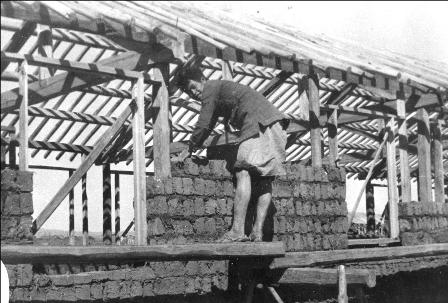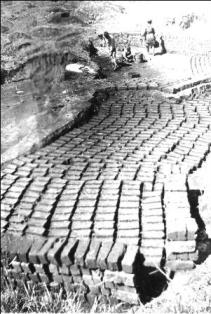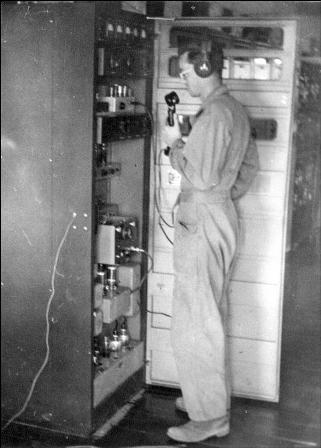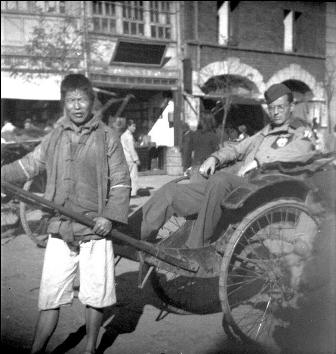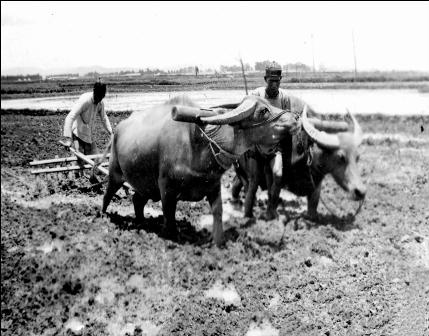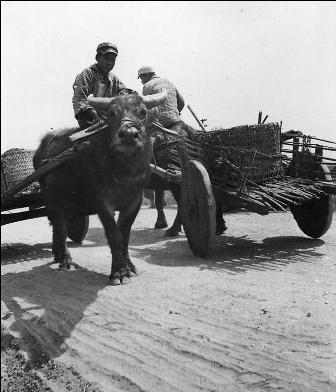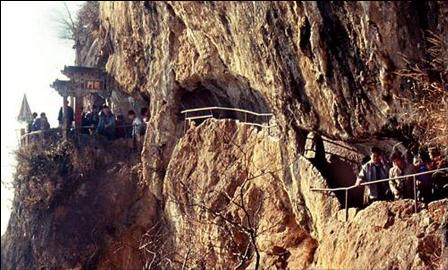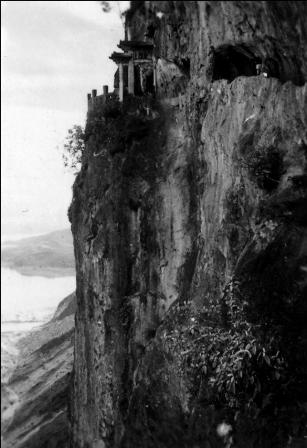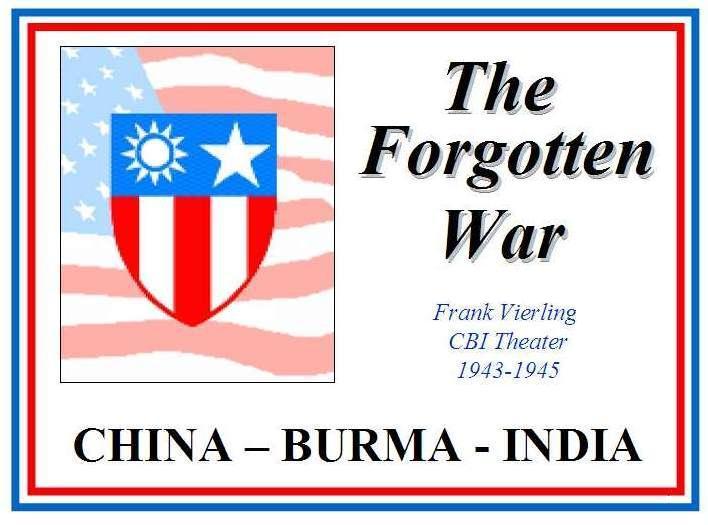
| ● I graduated from high school in June 1942. |
| ● Attended one semester at The Cooper Union Art School |
| ● Got Draft Notice in December and physical on January 1, 1943 |
| ● Inducted January 8 at Fort Dix, New Jersey |
| ● Army Air Force Basic Training at Miami Beach, Florida |
| ● Radio Operators School, Scott Field, Illinois - washed out |
| ● Radio Maintenance School, Truax Field, Madison, Wisconsin |
| ● Back to Scott Field for Army Airways Communication School |
| ● Thanksgiving furlough Returned to Smyrna, Tennessee. |
| ● By train to McClellan Air Base, California, (Christmas Eve in L.A.) |
| ● Then Camp Anza to await my cruise to who knew where? |

1943, Truax Field, Madison, Wisconsin with my barracks mates in front of building No. 1939.
I m the guy under the arrow.

Frank Vierling No.2 goes to China.
My Uncle Frank was a missionary doctor in China.
He and family returned to the States when the
Communists took over his hospital back in 1926.

My graduation class, Scott Field, Illinois. I earned my Corporal stripes.

The pleasure liner S.S. WASHINGTON
The Washington was chartered from the U. S. Lines in October 1940.
She was fitted for troop carrying and renamed the Mount Vernon.
We sailed from Wilmington, California, February 28, 1944.
We made one stop at Melbourne, Australia, and after 32 days at sea,
we docked at Bombay, India, April 1, 1944.

The Washington as the troop ship MOUNT VERNON
 |
We docked at Bombay next to the Gateway Arch to India.
We were taken to a British camp to await transportation to Calcutta by railroad.
Several weeks later, waiting for our train to leave Victoria Station a munitions ship in the nearby harbor exploded.
Our departure had been delayed by a ship fire and then canceled by the explosion. A second explosion lifted a 5,000 ton ship 60 feet in the air.
We were returned to camp, only to be taken back to the docks to help clear burning piers of munitions and equipment.
1500 died, 3000 injured, 27 ships, totaling 100,000 tons, were sunk or burned. It took 10,000 men 6 months to clear the harbor of a million tons of debris.



Memorial erected in memory of the Officersand Men of the Bombay Fire Serviceswho lost their lives in the Bombay Dock explosions,April 14, 1944.


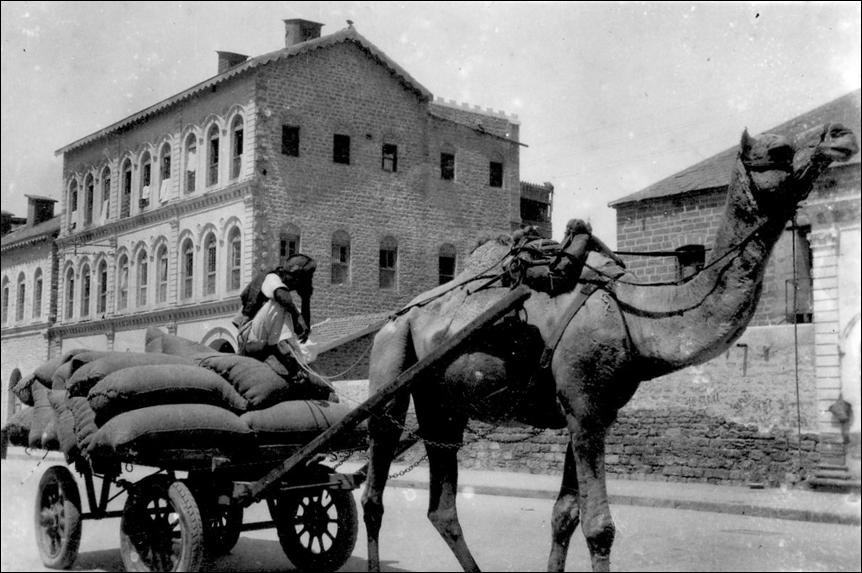
. . . for a Jersey boy who had never been more than a few miles outside of New Jersey.
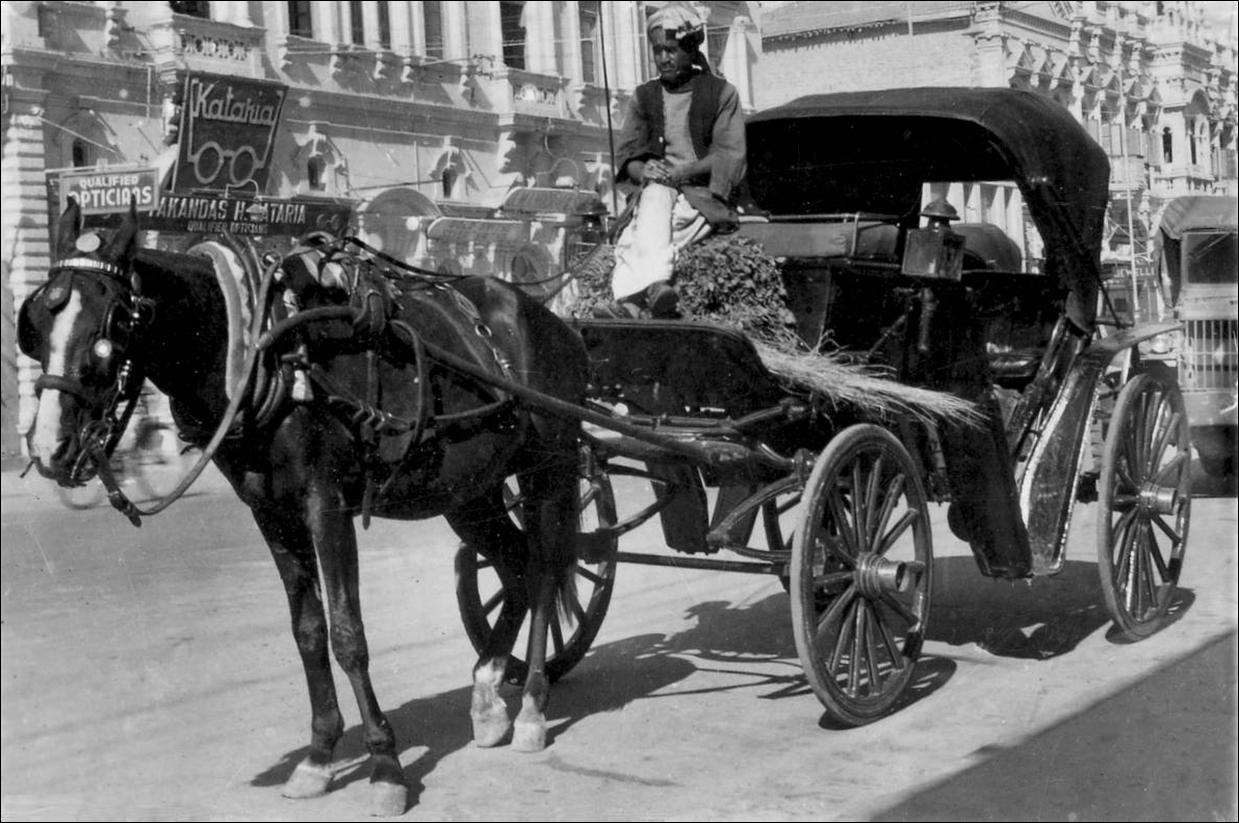
A Bombay gharry (taxi)
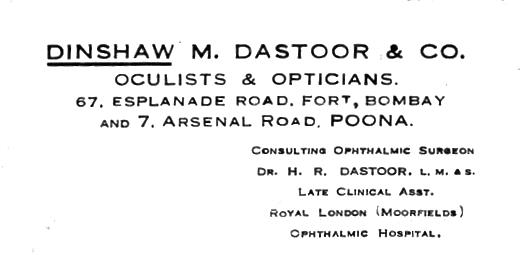
We were in Bombay long enough for me to buy prescription sunglasses from Dinshaw M. Dastoor & Co., opticians.
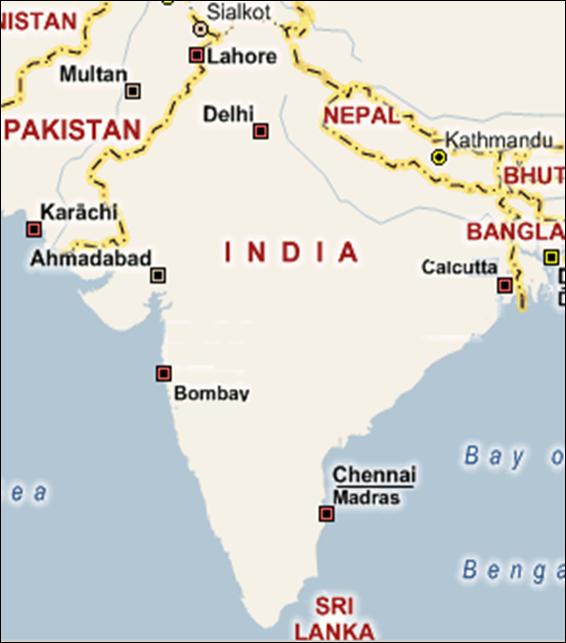
● We traveled from Bombay to Calcutta by 3rd Class India Coach, approximately 1100 Miles.
● In Calcutta Japanese air raid alerts introduced us to slit trenches. We left Calcutta by train to a British Camp on the Brahmaputra River.
● Several days later five of us traveled by stern-wheel riverboat, to another railhead.
● Then by narrow gauge railroad into the Assam Valley to Chabua and fly over The Hump to Kunming.
● At Kunming, months passed and none of us were advanced in rank, while others arriving after us got promotions. We protested to our CO. He, and we, discovered we weren t even on his roster. We were supposed to be assigned to a B-29 base in north China, a base that didn t exist when we first arrived. At this late date we all elected to stay in Kunming and each received an extra stripe. I remained in Kunming from April 1944 to October 1945.
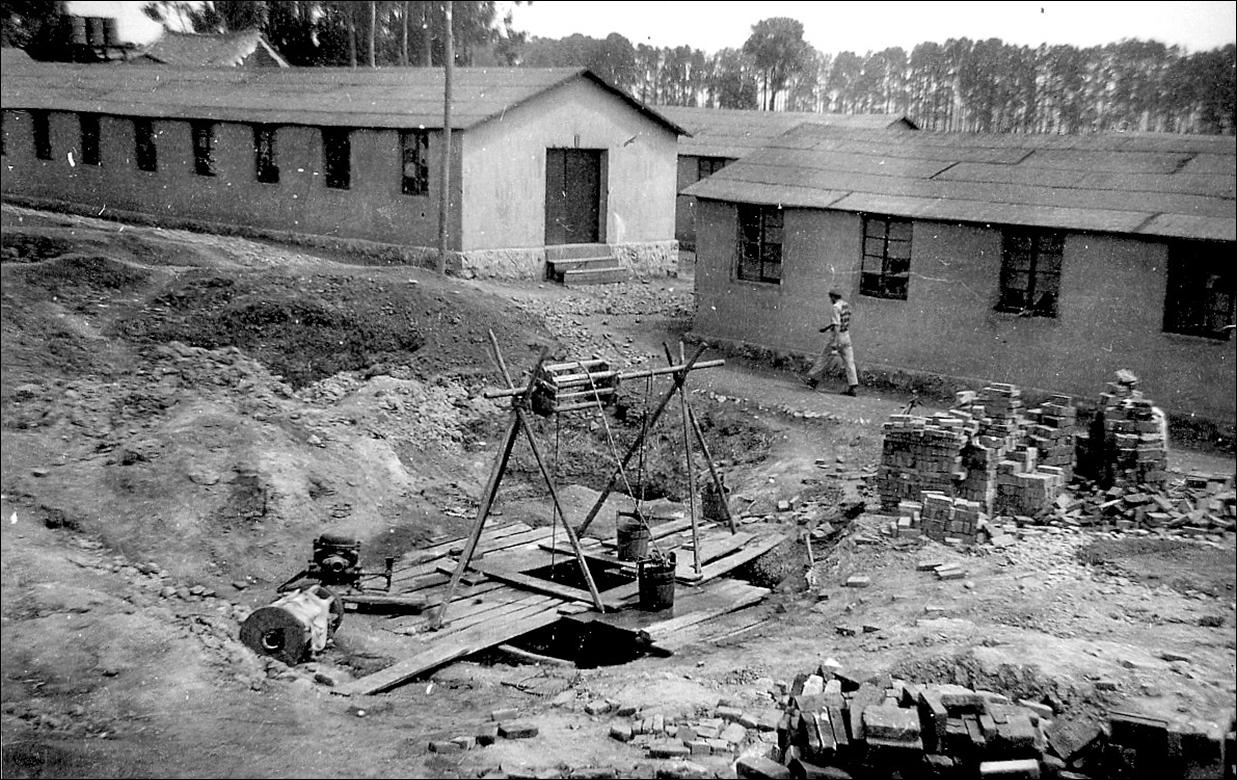
We were assigned to Hostel 10. Drinking water came from this muddy well. Our house boy was supposed to boil it. To drink it, you first filled a wine bottle and let the mud settle, then into a second settling bottle followed by a third from which you drank. It tasted awful, but there wasn t much mud left in it.
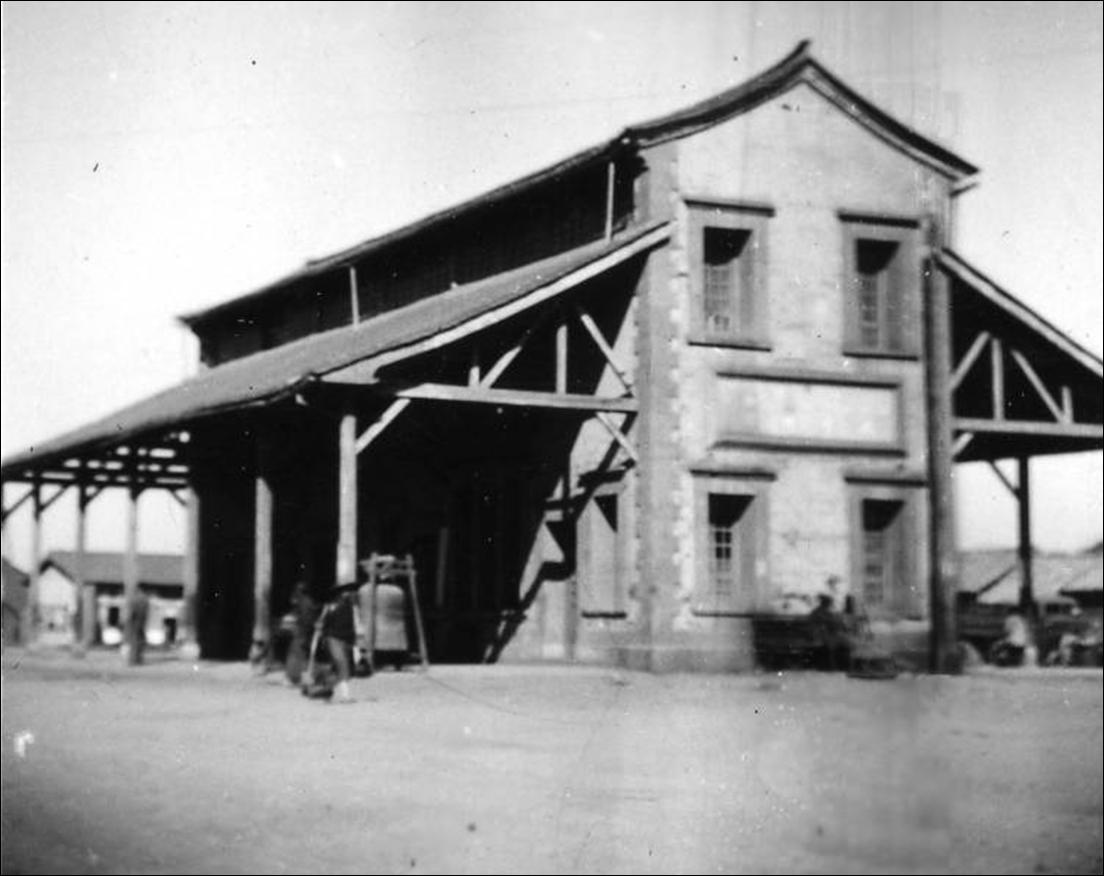
The Burma Road tollhouse was directly behind Hostel 10.
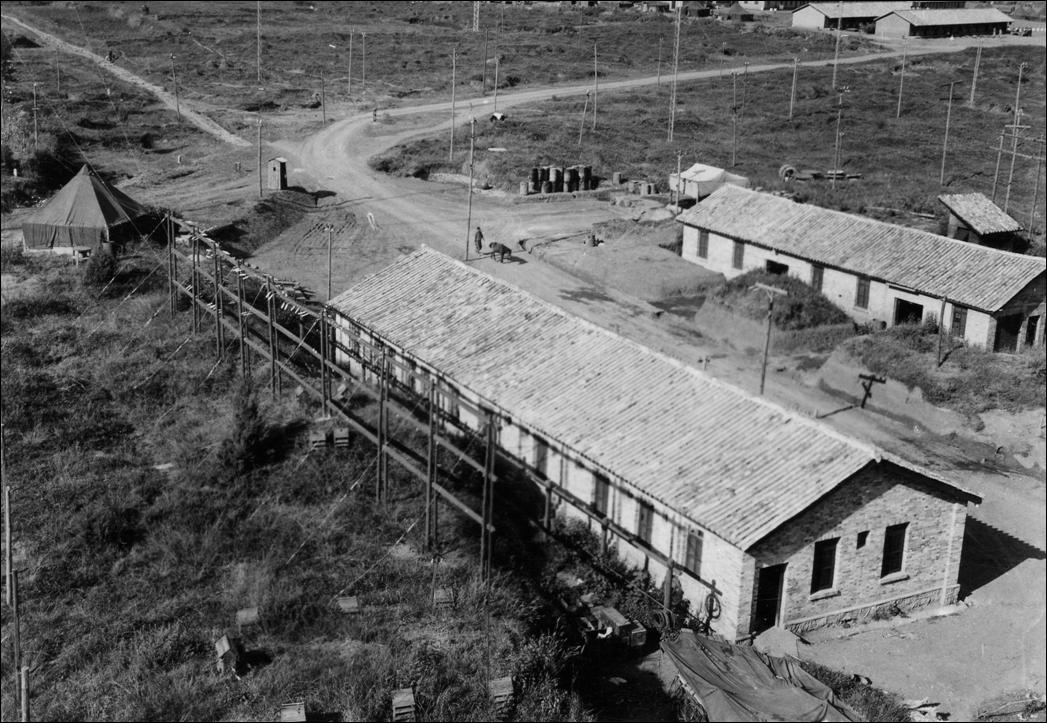
130th Army Airways Communication Transmitter Installation, Kunming, China.The largest overseas AACS facility.
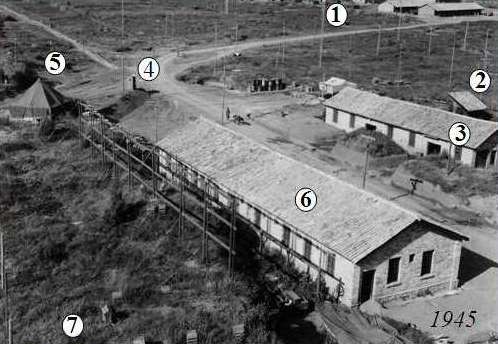 1 - Our new Hostel 17 1 - Our new Hostel 172 - The necessary 3 - Power Generators 4 - Guard shack 5 - My tent when I was promoted to chief. 6 - Transmitter building doubled in size while I was there 7 - Vents for the original underground installation, when bombings were frequent long before I arrived |
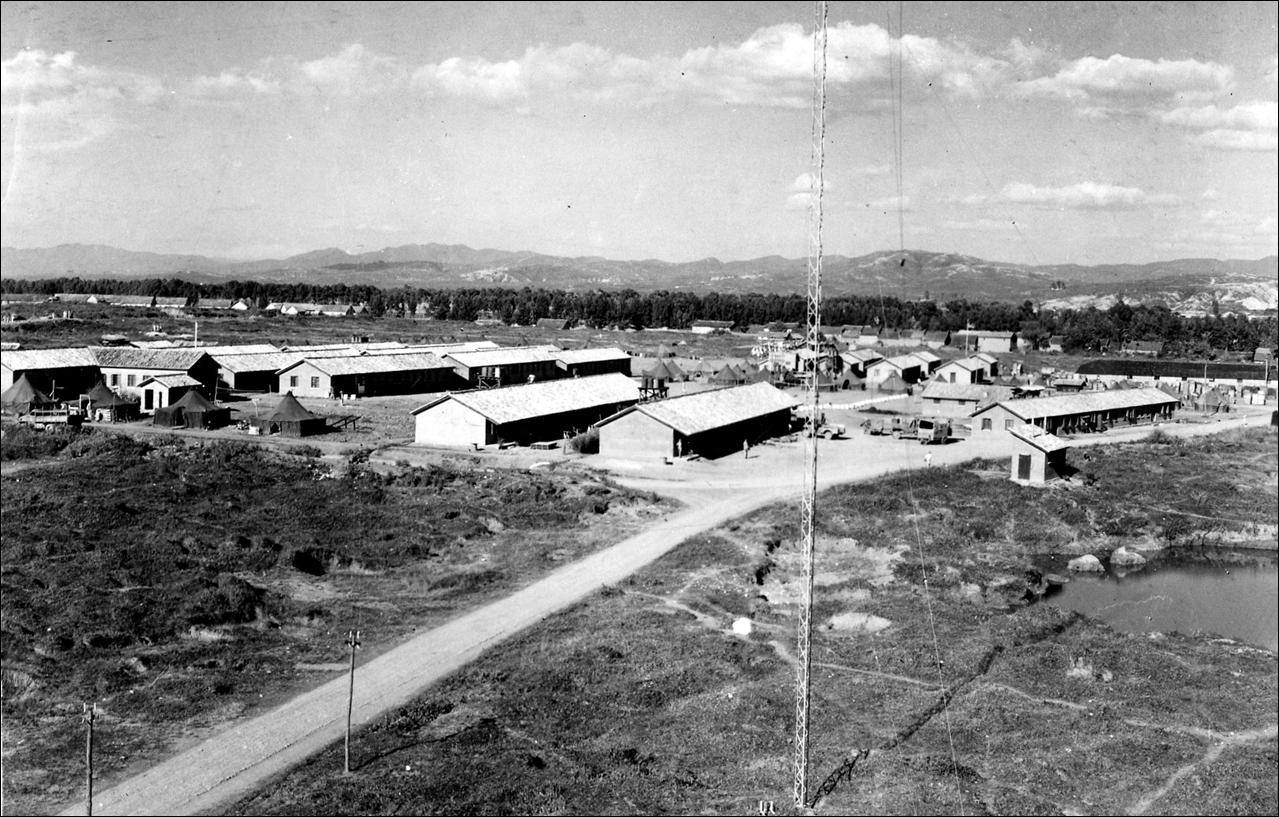
A better view of our new hostel accommodations. After moving to the tent, I had to go back for my meals and showers. One of our many antenna towers is in the foreground.
Our transmitter building was doubled in size with adobe bricks held together with a mud and lime mortar.Bricks for our building were made on site (right). All they need is a hoe, dirt, water, straw and a simple wooden form for shaping the mud. Then a few sunny drying days. Women did most of the brick making. |
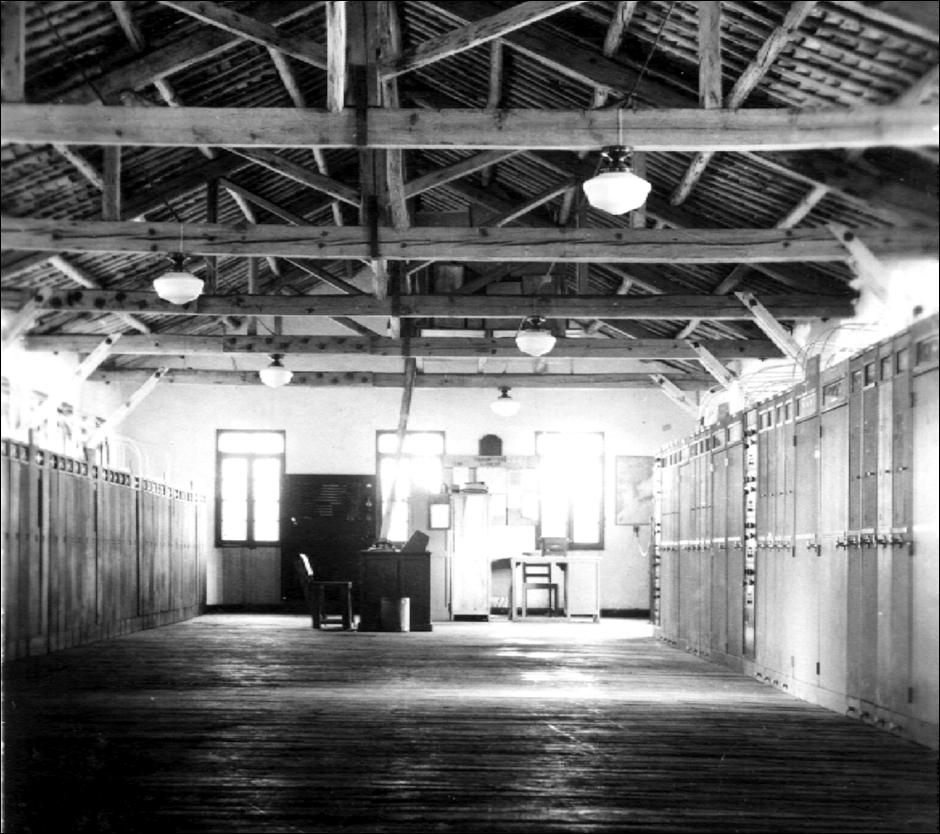
Our enlarged transmitter installation.Transmitters lined each side of the building. Our call letters were WUTK.
We also housed a U.S. Navy transmitter. Its mechanical relay chatter revealed when there were B-29 bombing raids on Japan.
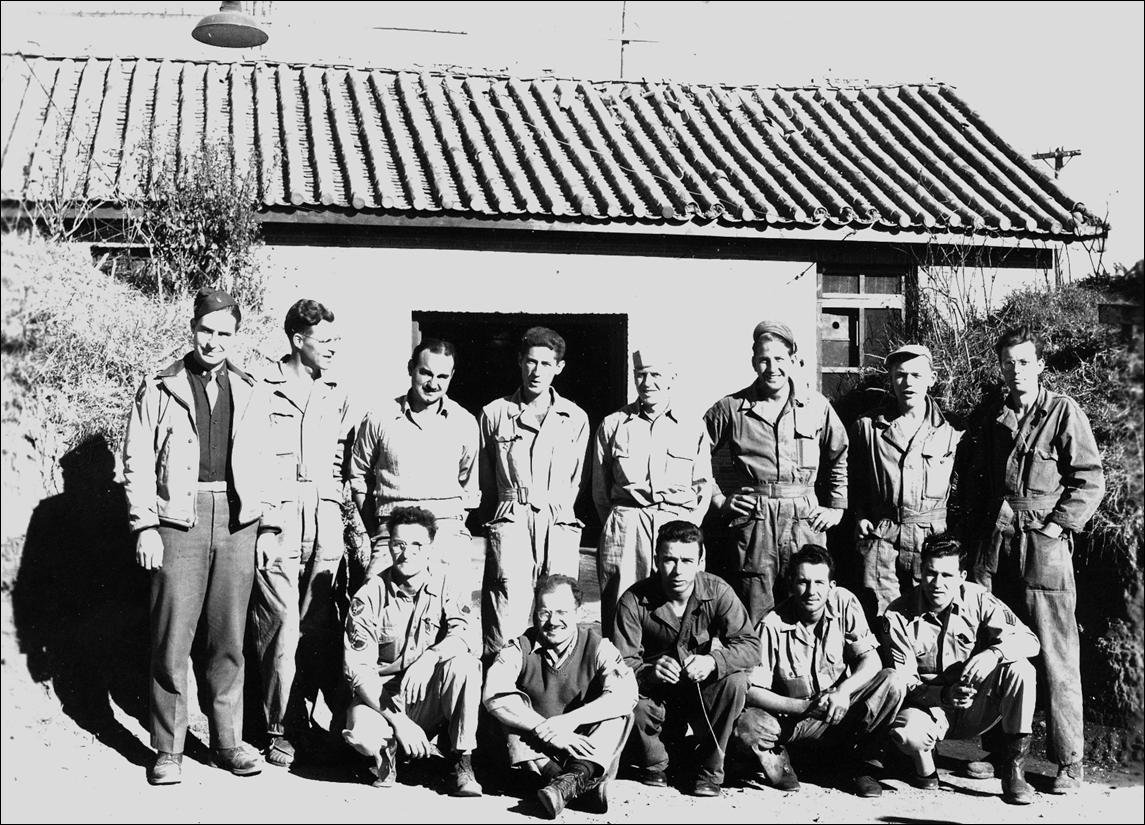
Our crew, standing: Lt. Wilber Kline, Arthur Aho, Harry Soccorso, Fred Gurwitz, Forrest Shanklin, Ken Bell, Dayton Johnson, Frank Vierling, On ground: Charles Kukura, Joe Accetta, Henry Wolsky, Frank Toppino and Donald Welch.
|
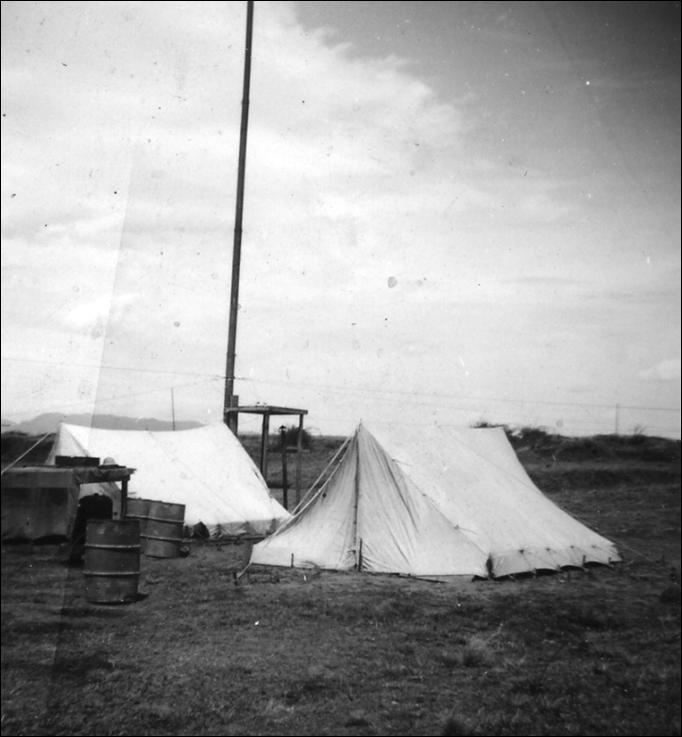
Our original Radio Range, used to find lost aircraft.
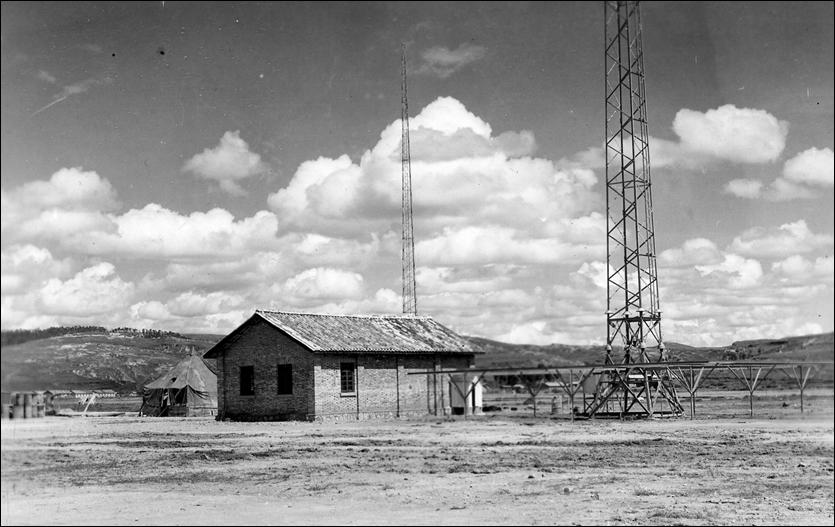
This new Radio Range helped find Cardinal Spellman s lost plane, while he was visiting troops in China, Christmas 1944.We also had a homing transmitter (or radio beacon) to guide pilots to our field. Early in 1945 we converted the beacon to an Armed Forces radio station to entertain the troops with stateside recordings.
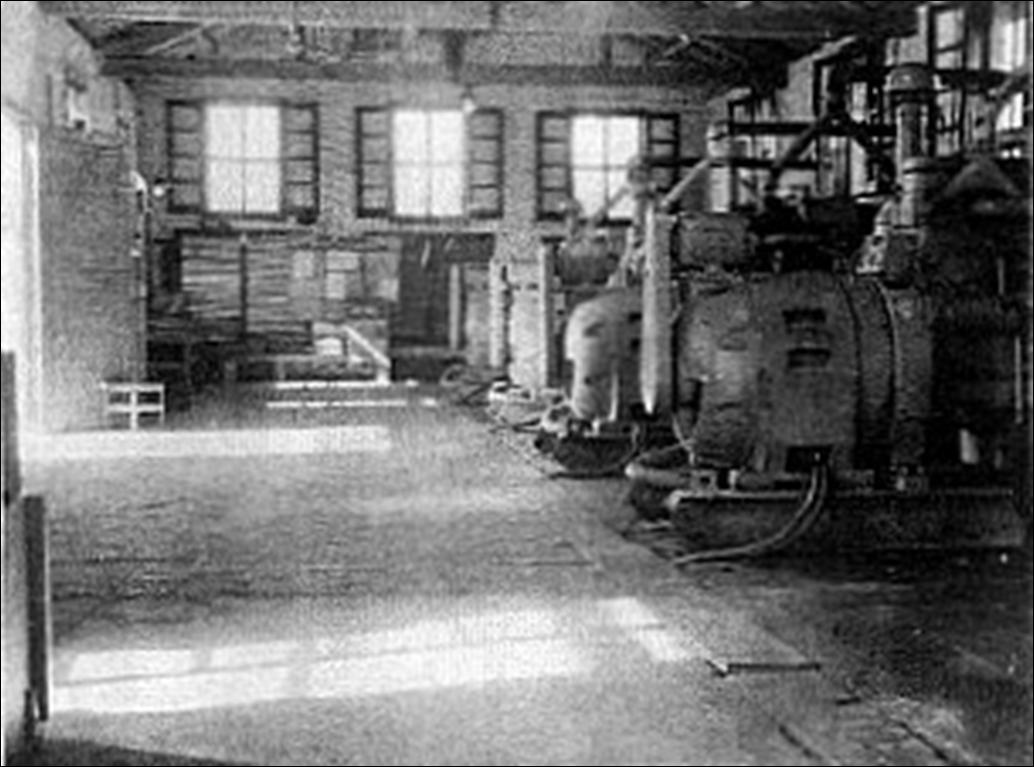
After several expansions, we were powered by four 50 KW diesel generators, alternating two running and two standby.
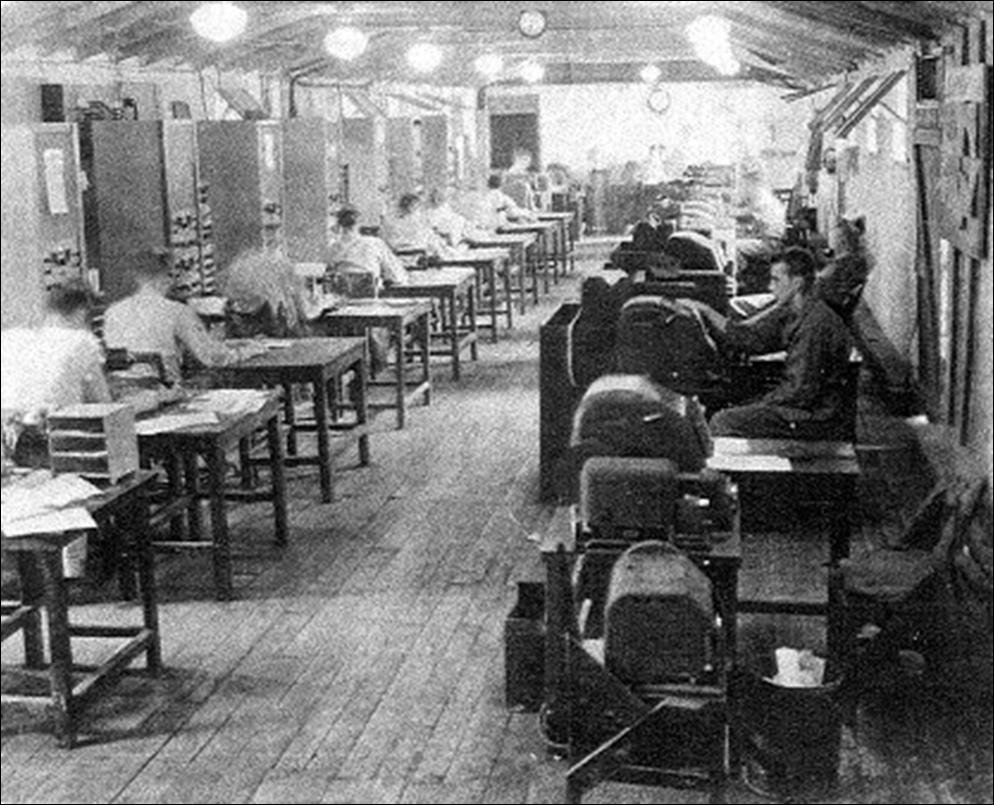
Morse Code receiver positions and Teletype operations.
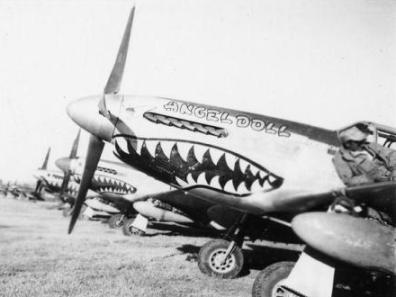 The famous Flying Tiger trademark. |
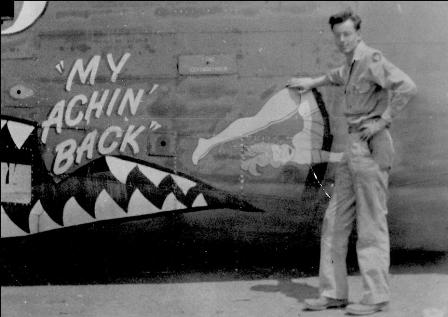 A little fun down at the bone yard. |
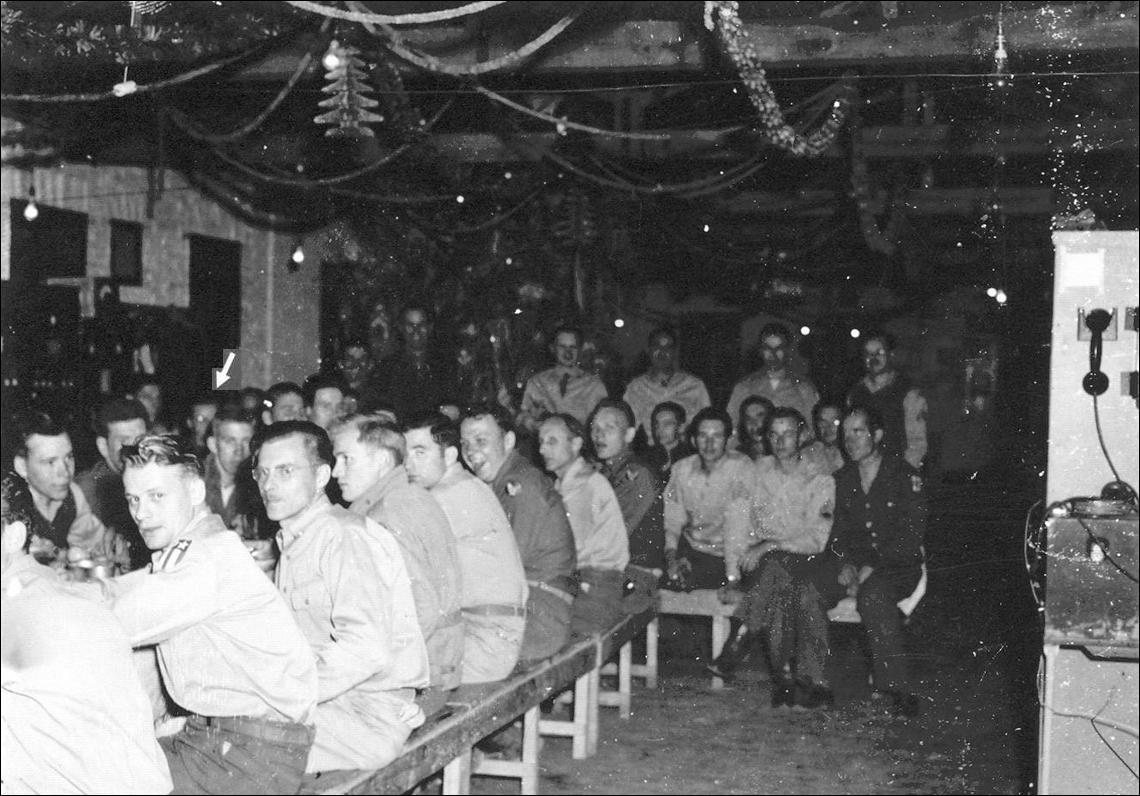
Christmas 1944, our greatly enlarged crew enjoying a holiday party in our transmitter building. We saved our care packages from home for this super feast.
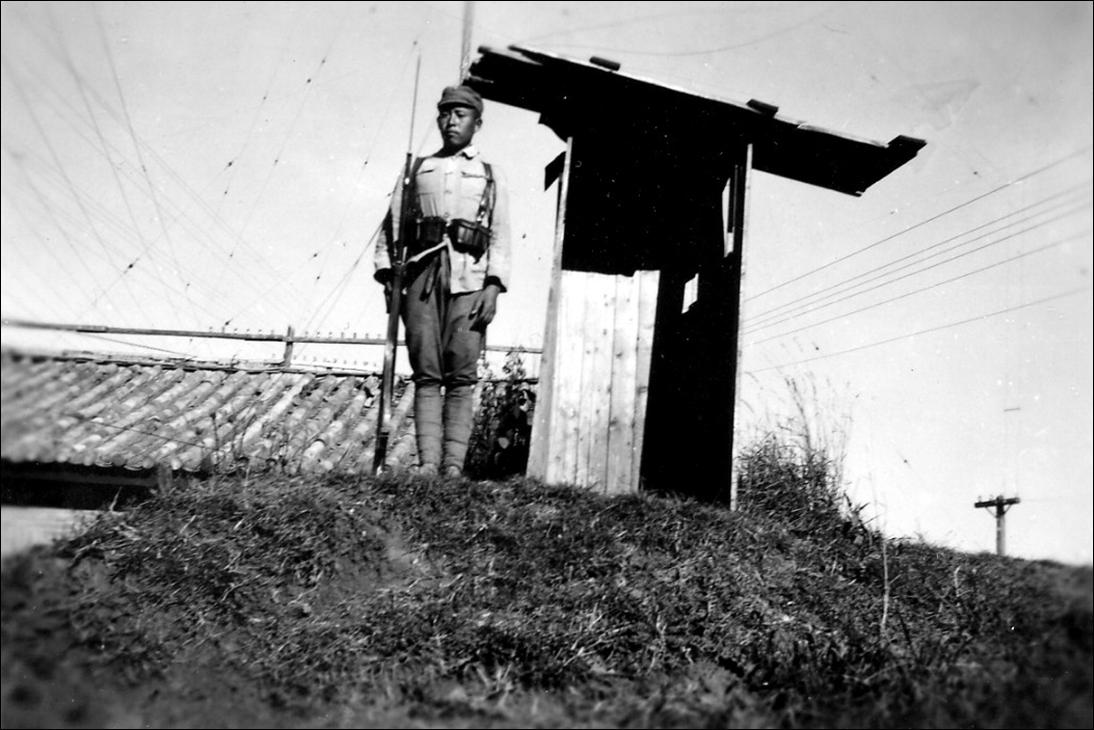
We had a small contingent of Chinese soldiers that patrolled our grounds. The guard shack was a transmitter shipping crate. The motor generator building s tile roof is in the background.
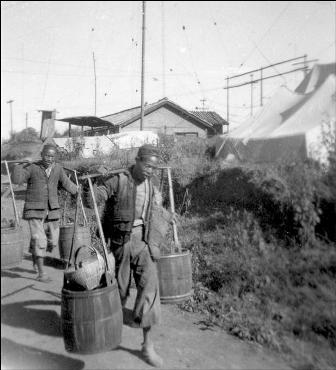 Workers traveled the Marco Polo Road which ran between our transmitter and power generator buildings. The tent on the right was for our Chinese guards. |
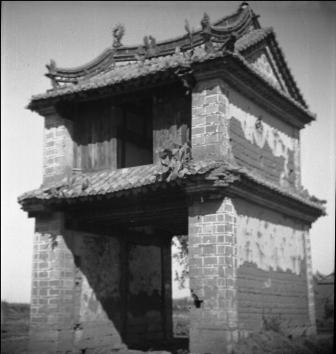 Even the poorest villages had an entrance gate. This one was for a village just down our road. |
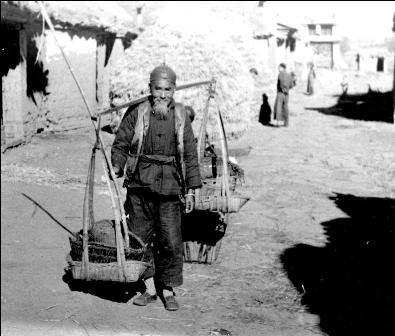
Village scene, note the village gate, upper right.
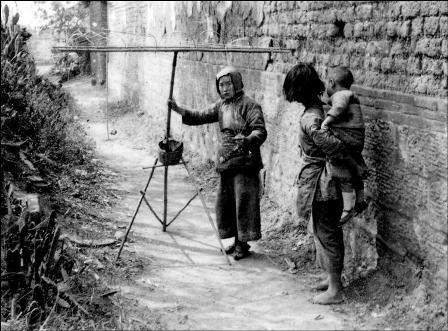
I don't know what this woman is doing - weaving, I suppose.
There are lines between this tripod and another down the lane which you can t make out.
|
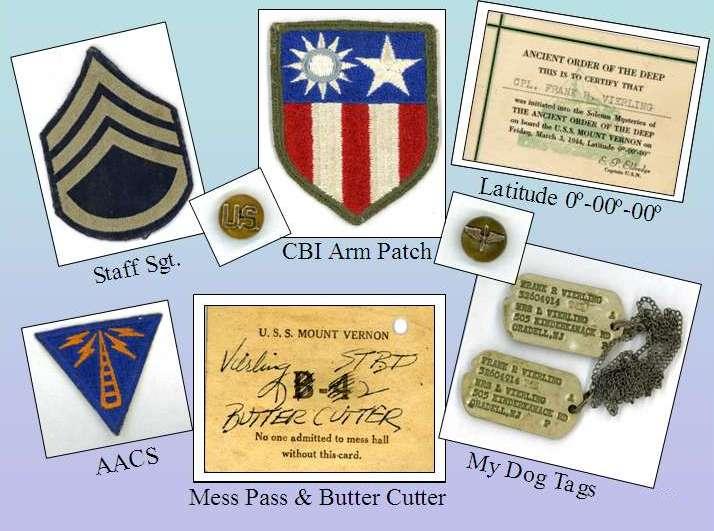
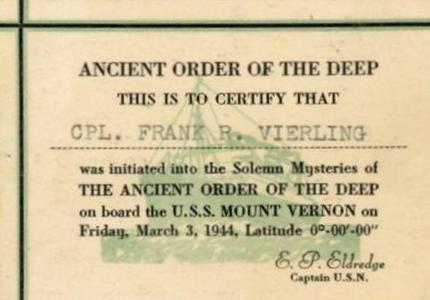 A symbolic group of POLLYWOGS (those who had not crossed the Equator before), representing all the troops on board, became SHELLBACKS by their ceremonious induction into the "Ancient Order of the Deep." |
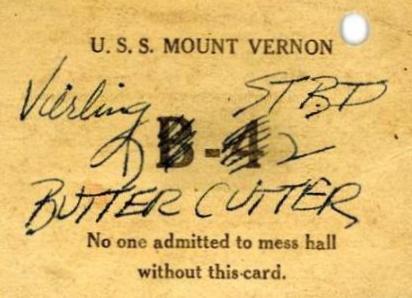 The job of Butter Cutter was a cushy one - two 5-man shifts worked alternate days cutting tub butter into patties. This gave us access to extra "goodies" from the galley and entry to the sailors version of an Army Post Exchange. |
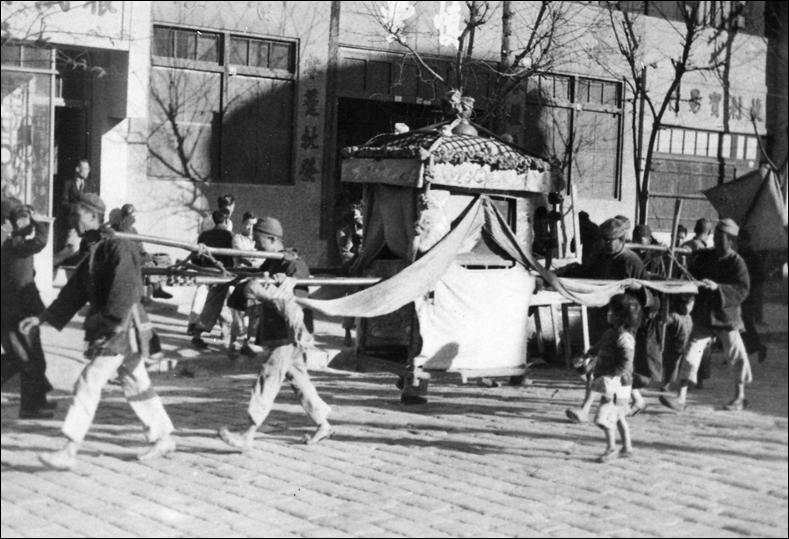
Kunming street scene, might be a wedding or just a wealthy lady passing by.
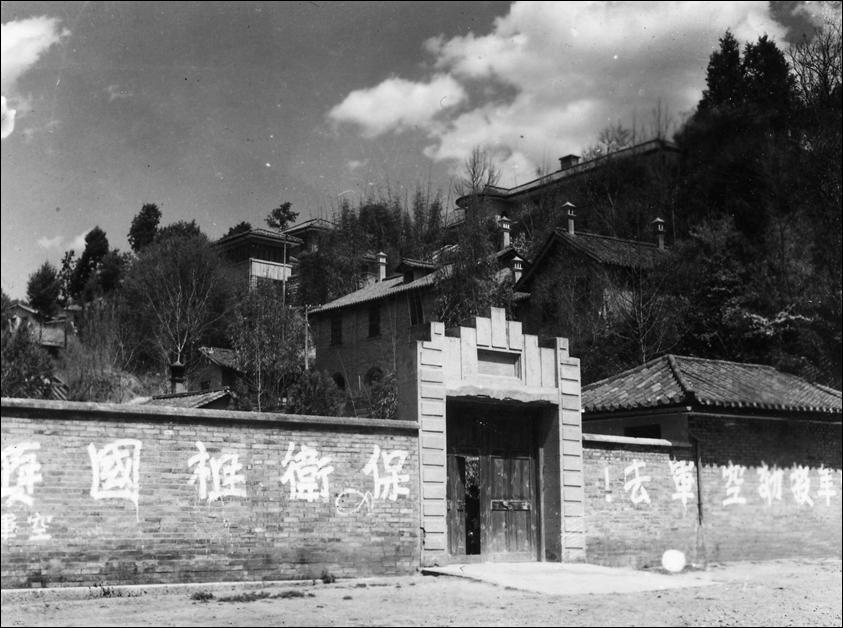
A gated community - the characters on the left read, Defend the Country and on the right, Support the Air Force.
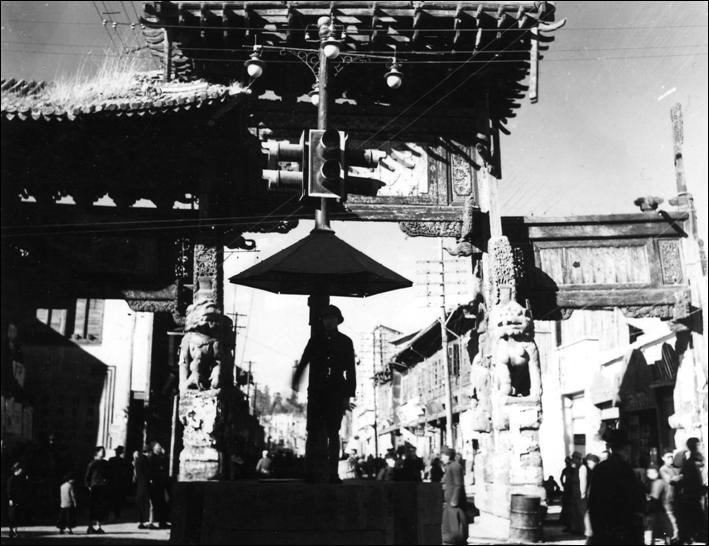
A gateway on the main street in Kunming showing Japanese bomb damage. The gate was demolished during the cultural revolution.
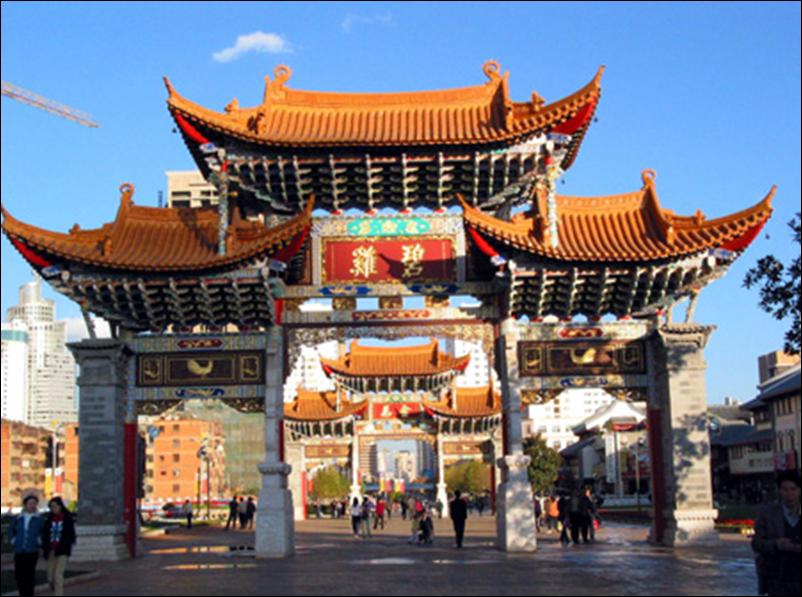
Since the revolution, the gate has been rebuilt. This picture was sent to me by a young Kunming student my daughter met on a business trip to Korea.
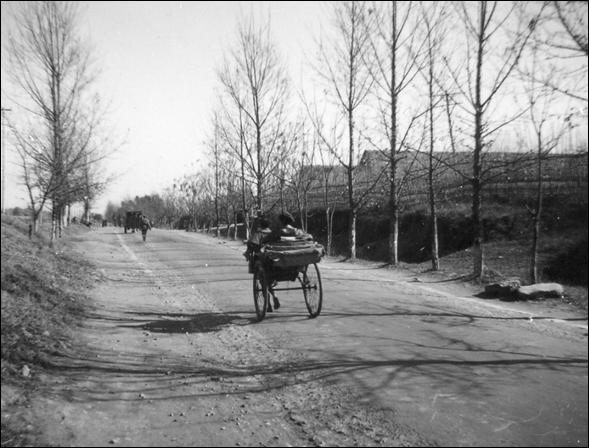
The road to Kunming. The city was just a rickshaw ride away.
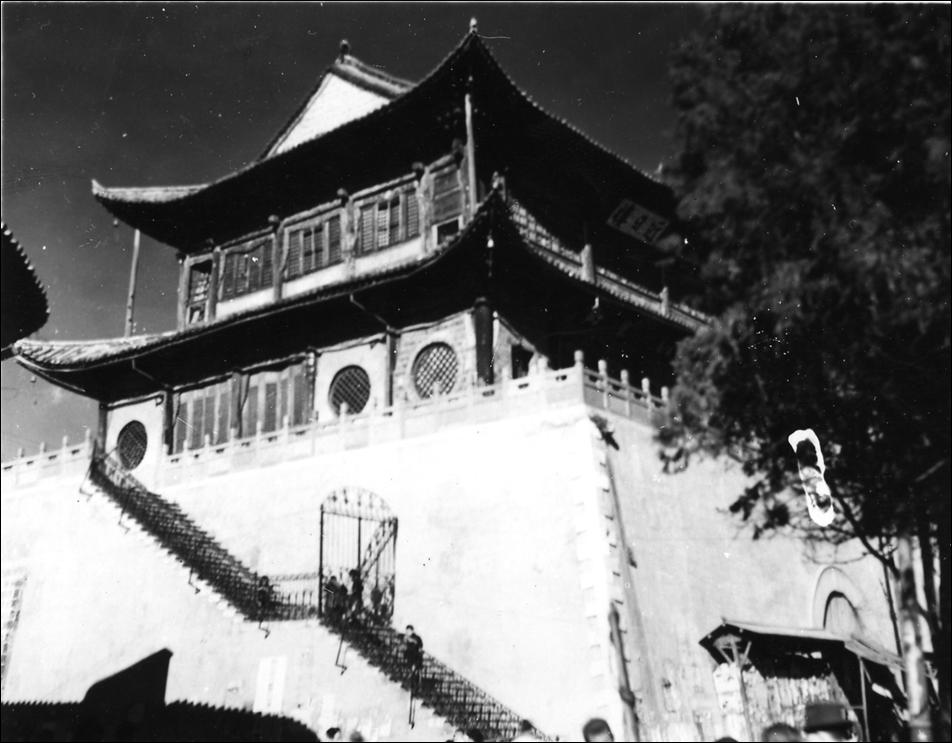
Kunming s telephone building
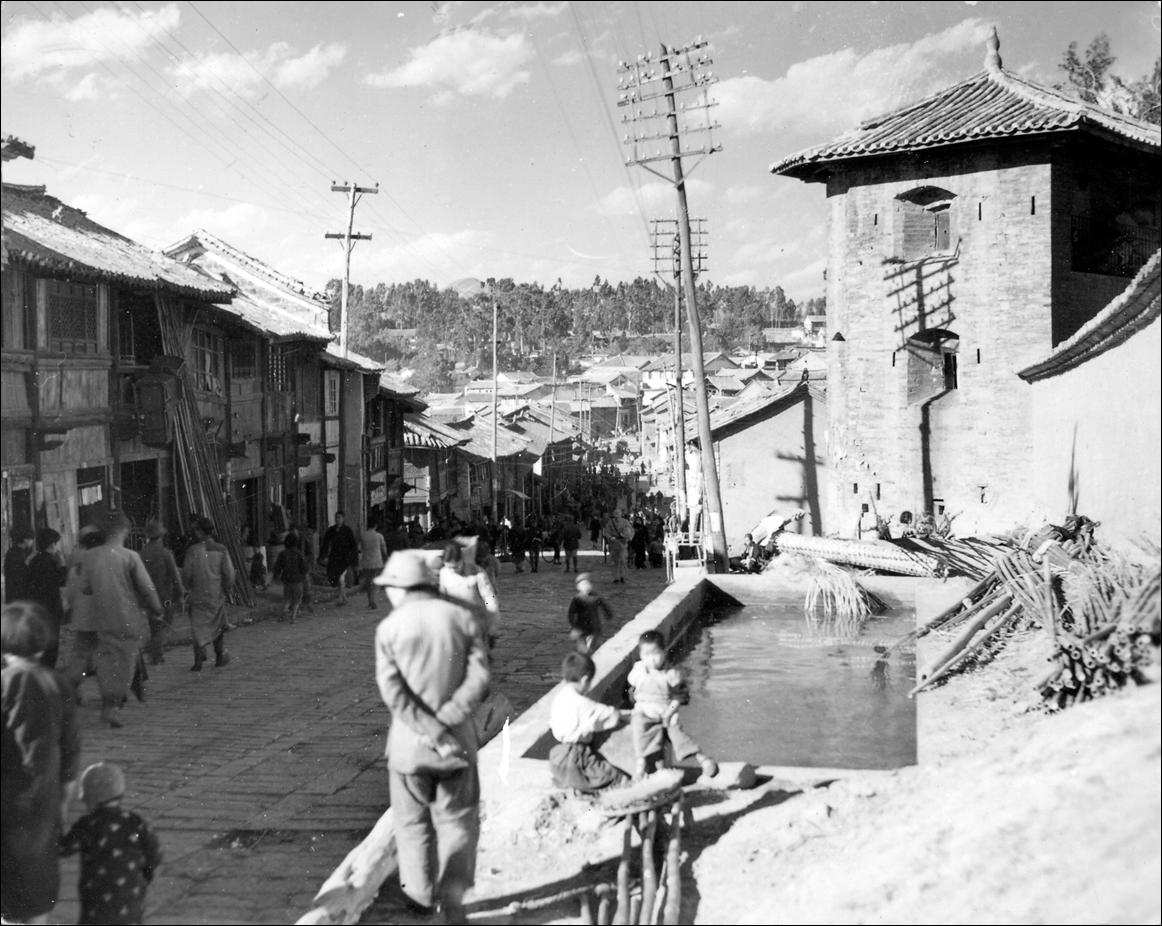
Kunming street scene with soaking tank for softening bamboo and reeds for weaving.
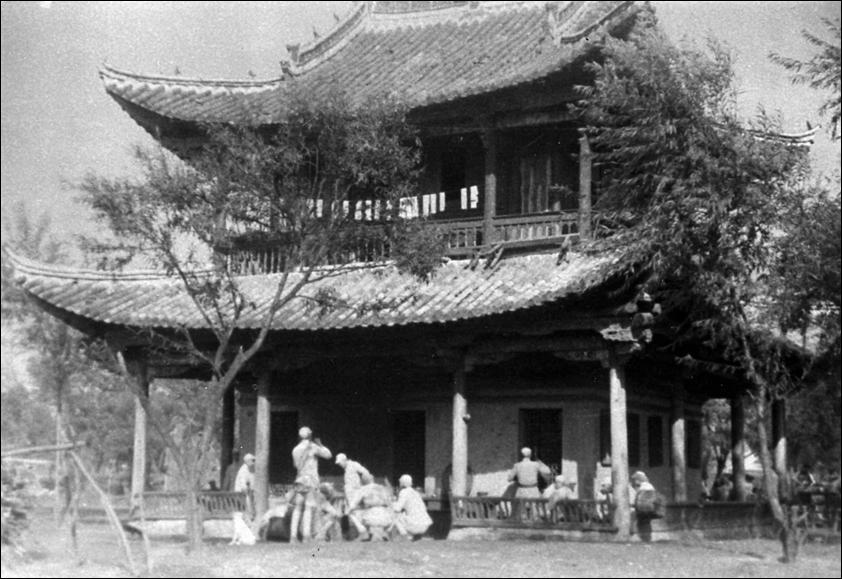
Tea House in Kunming s City Park
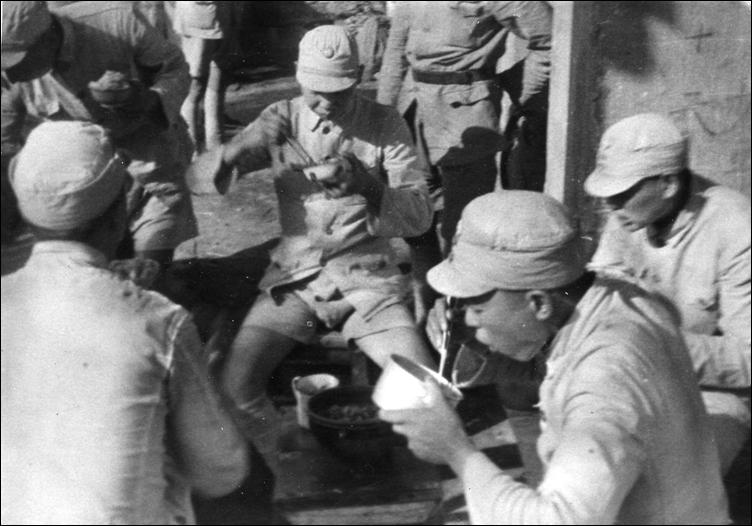
Soldiers taking a Tea Break at the Tea House
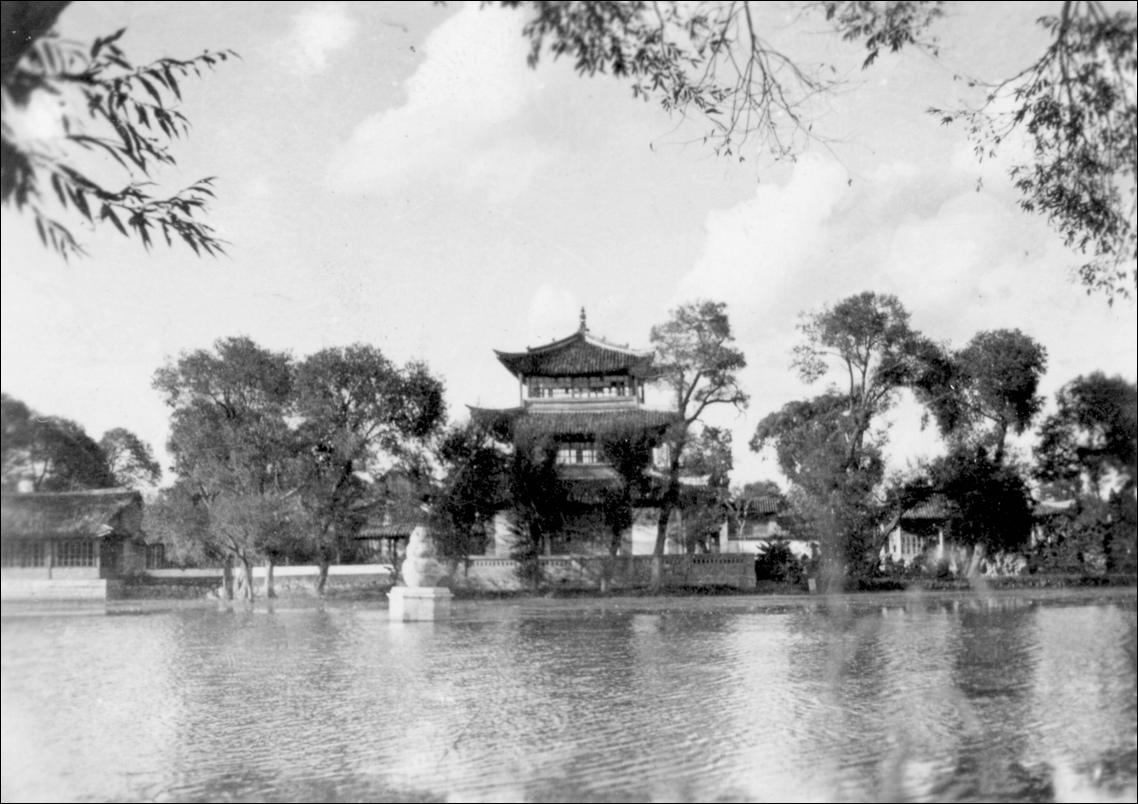
View from across the park lake.
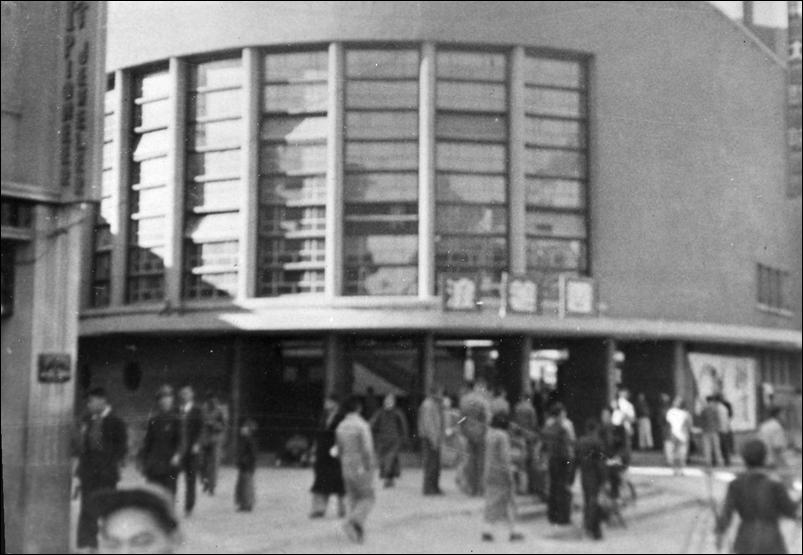
Kunming s cinema, one of the first buildings you see when entering the city.
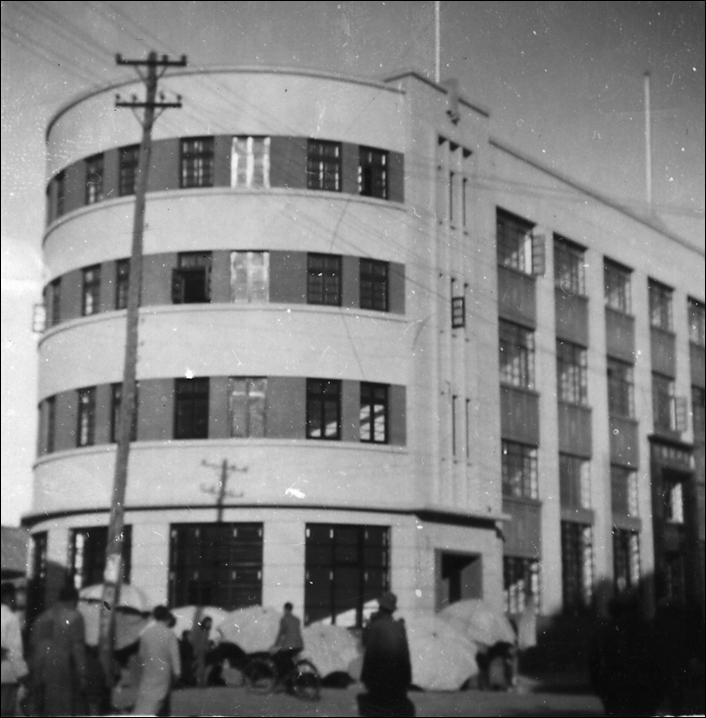
The Bank of China, with offices and apartments.
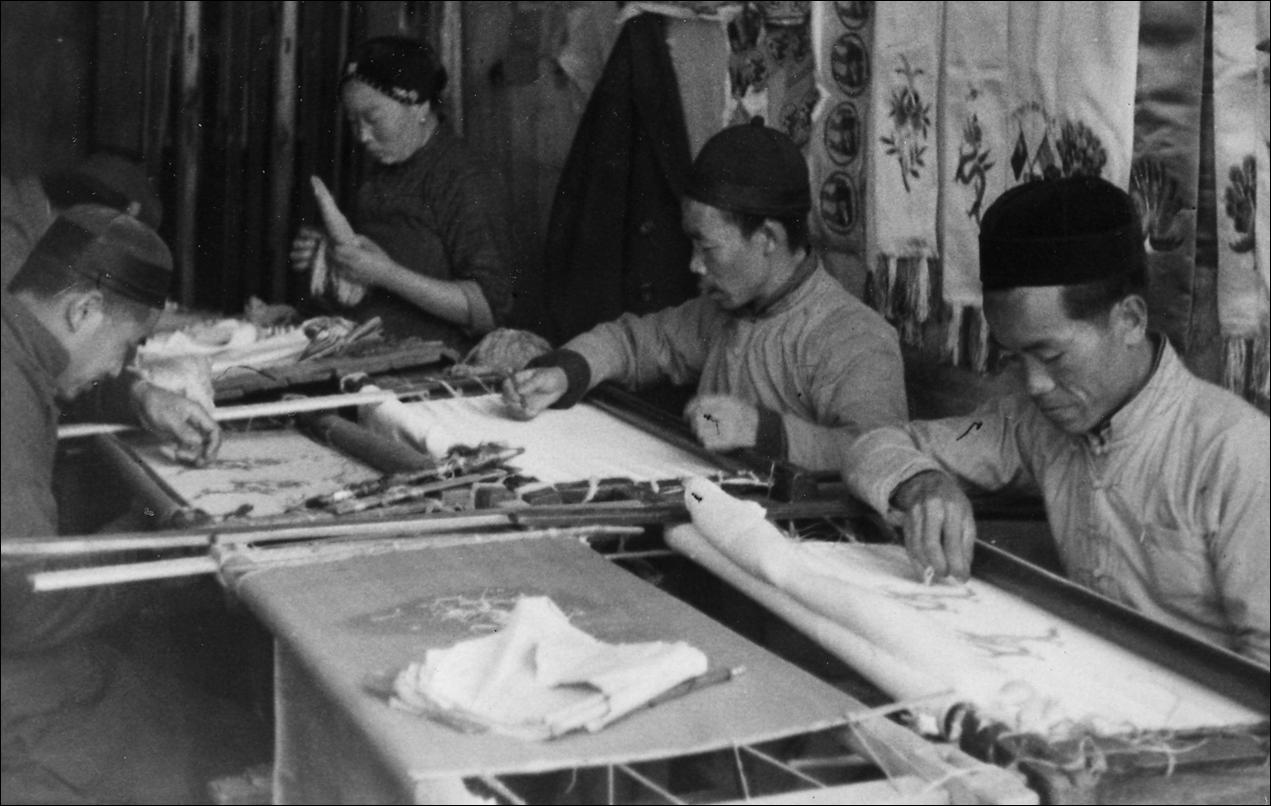
Open storefront embroidery shop on Kunming s main street. Men seemed to do most of the needle work.
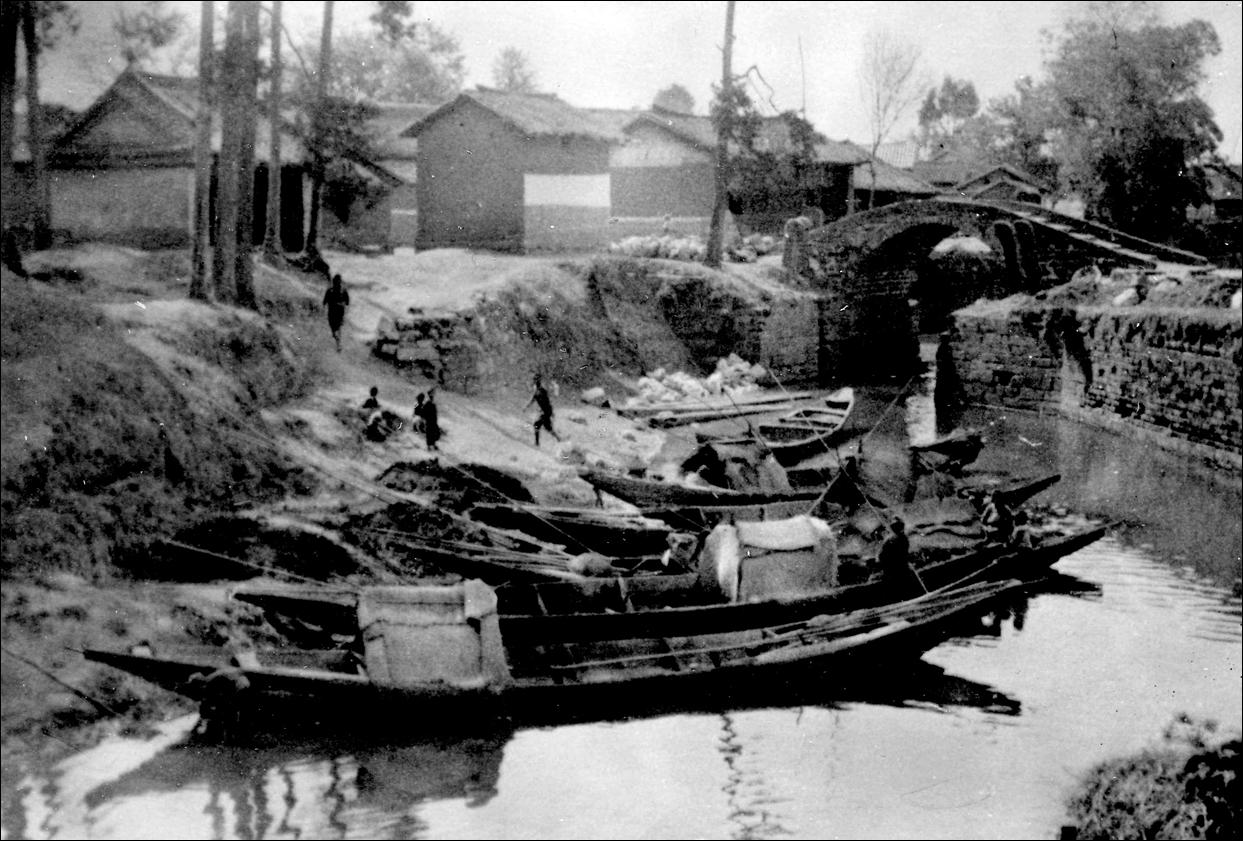
A days outing to the Qiongzhu Temples started with a rickshaw ride to the city and selecting a boat and oarsman for the trip across Lake Dianchi.
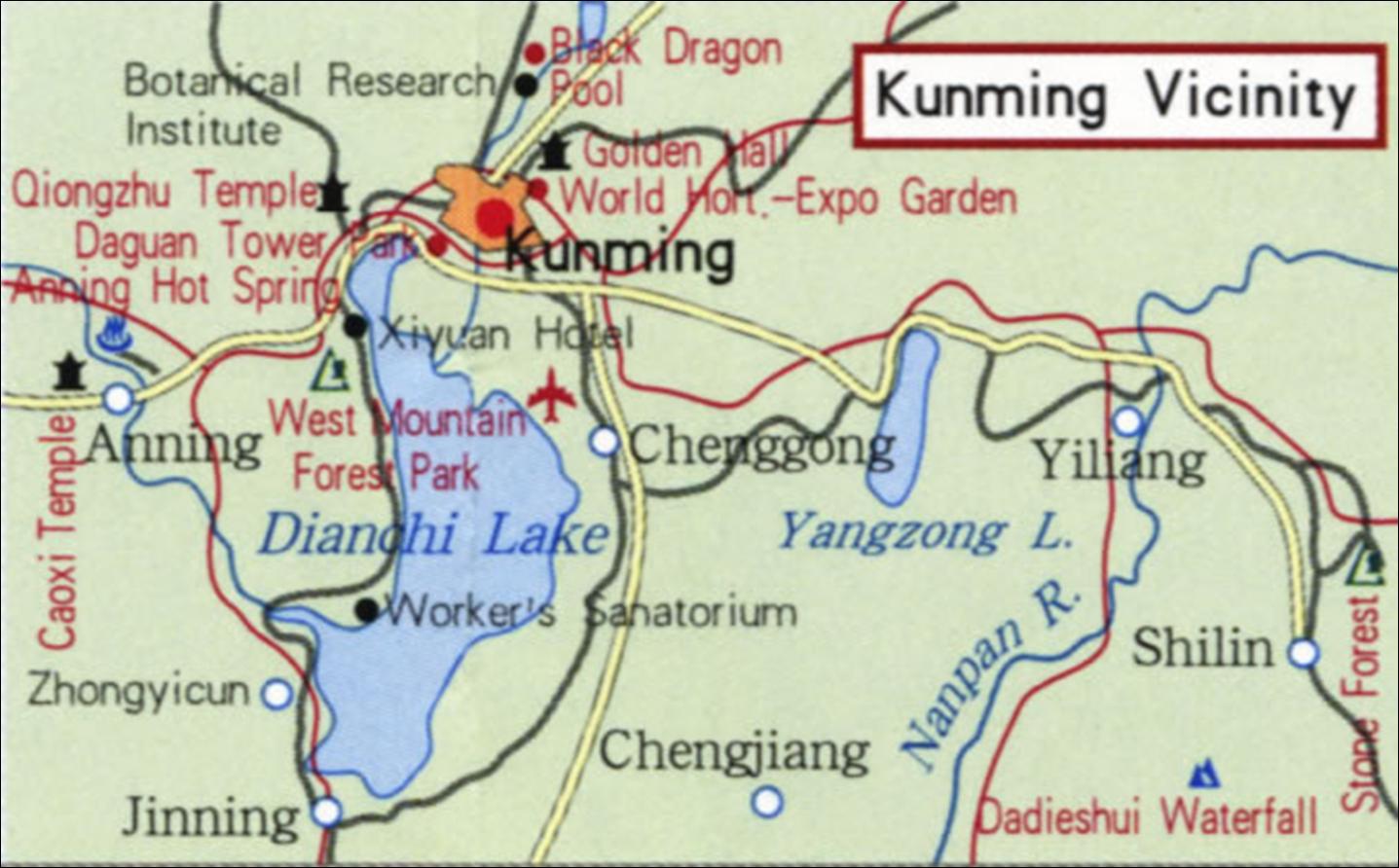
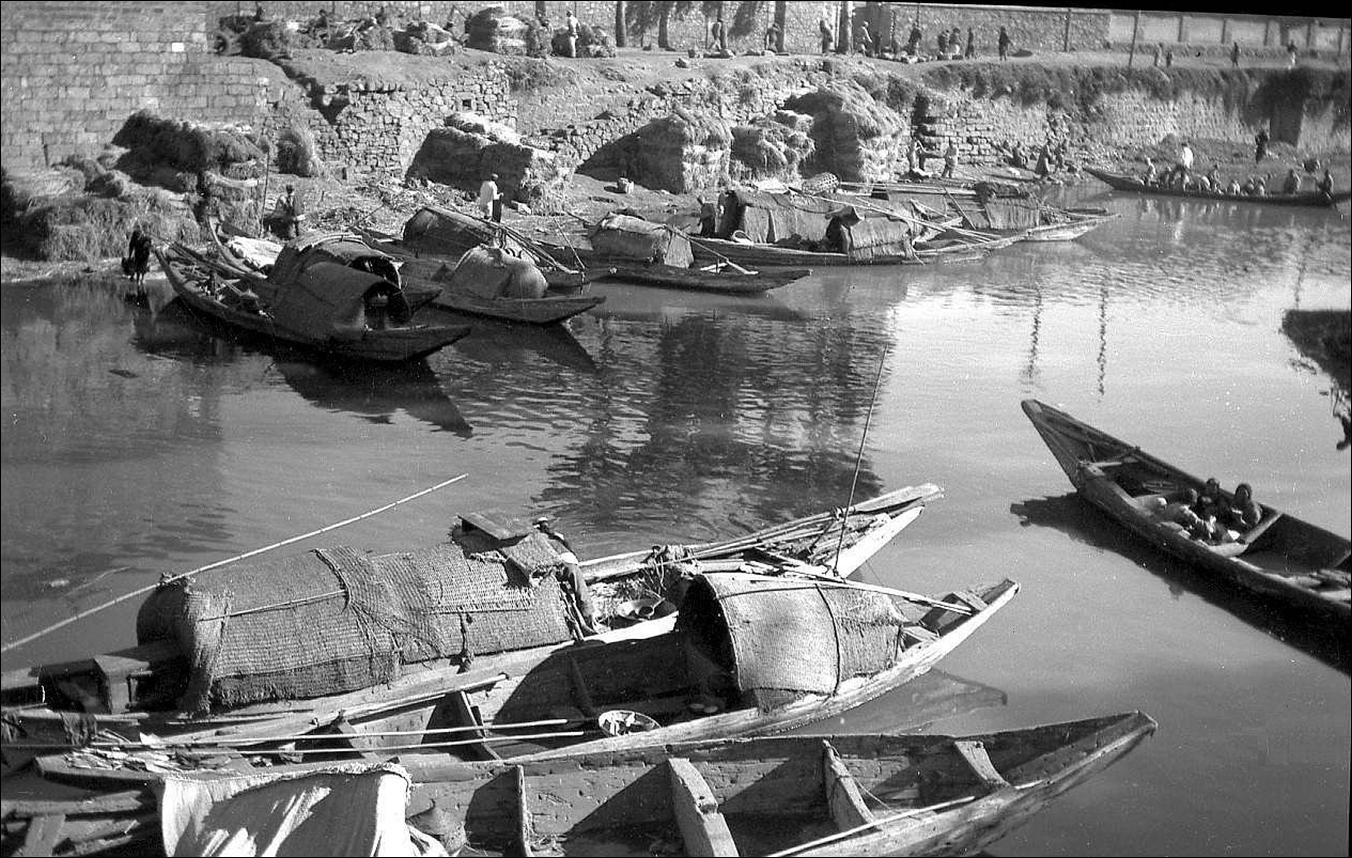
Along the river there are lots of boats to choose from.
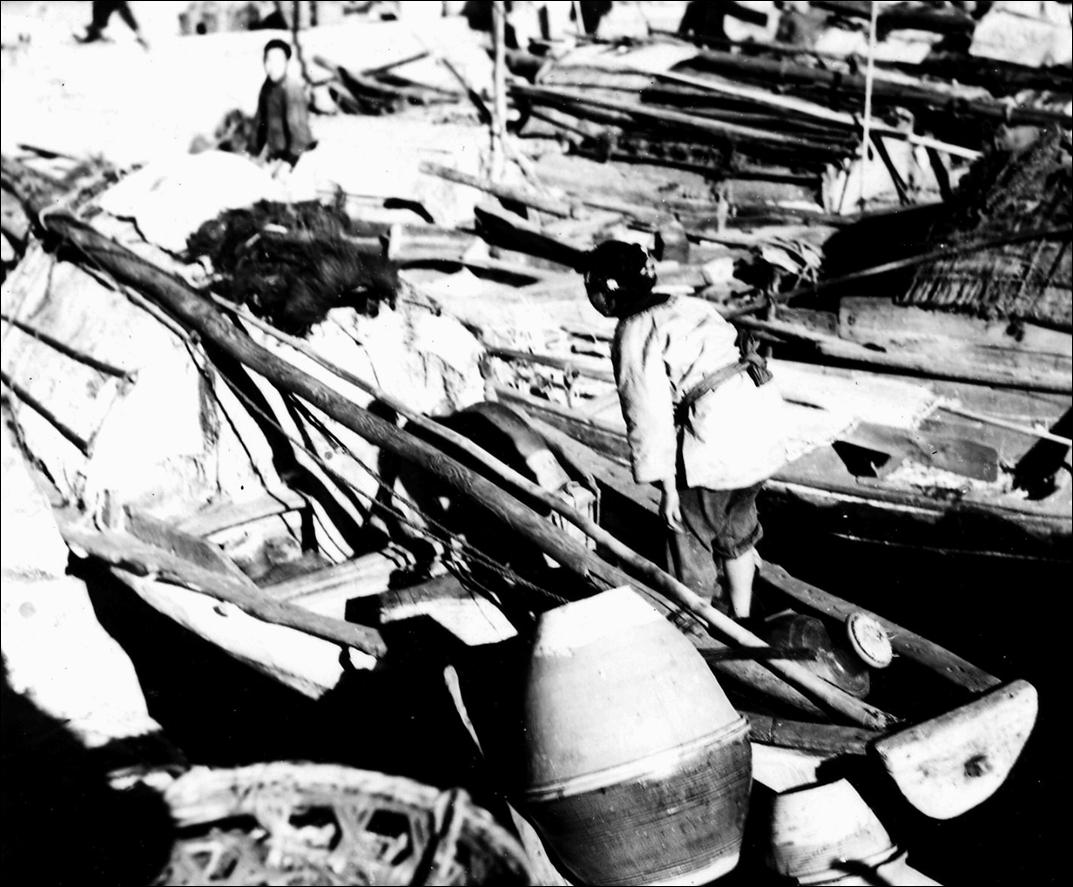
We picked out an oarswoman and her young boy to ferry us to the temples.
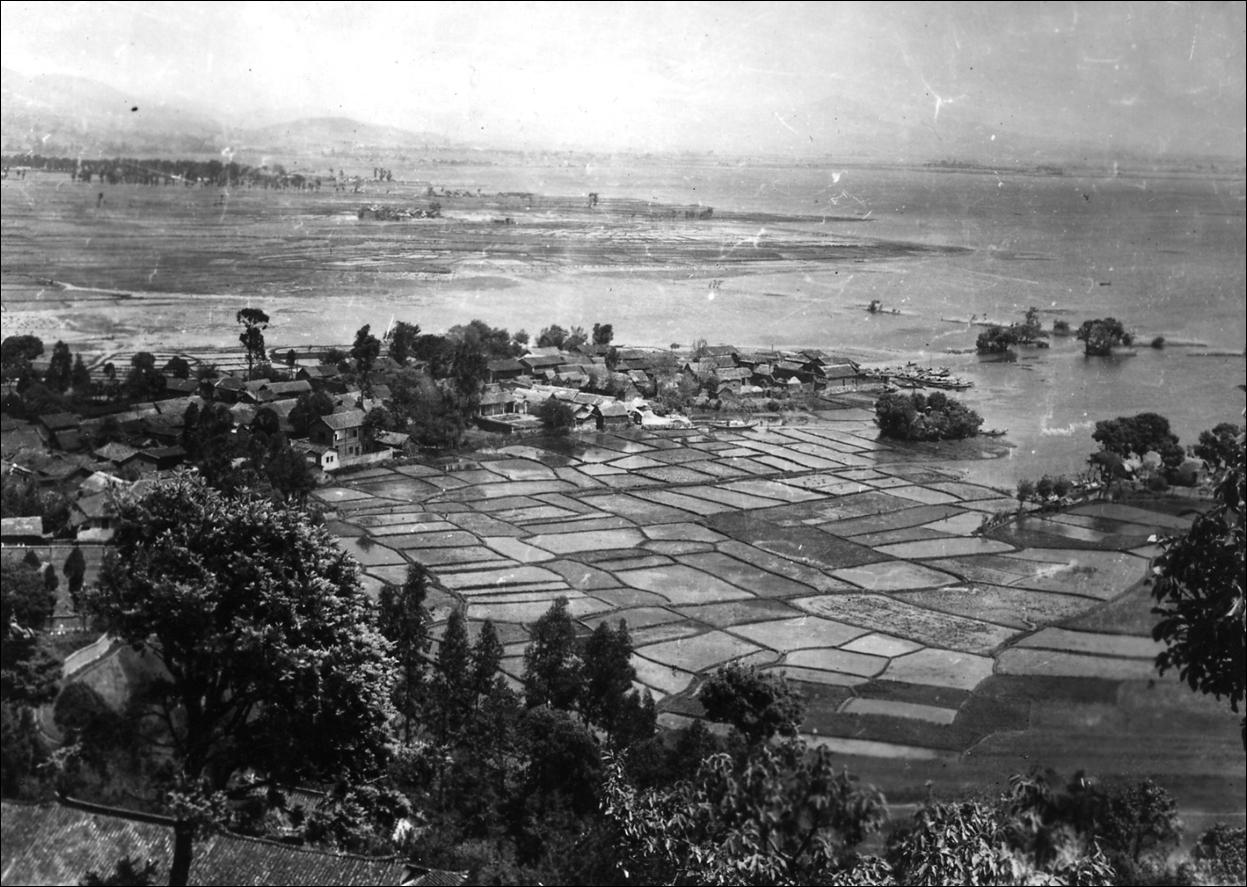
Looking back at Lake Dianchi as we start up the mountain. The village, lake and rice paddies made a tranquil scene.
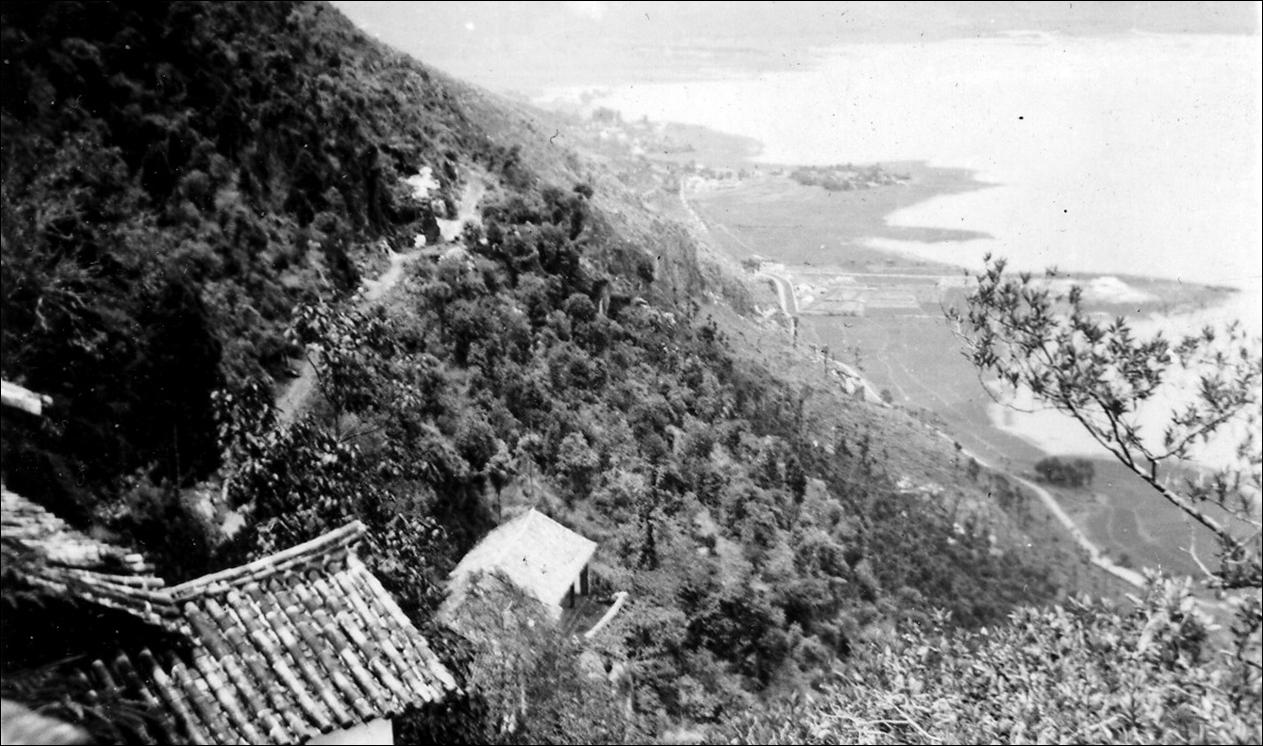
Looking back you see the shrines, at intervals, along the trail.
At each shrine there were discarded shoes and rice-straw sandals.
For a few coins, new footwear could be purchased, symbolizing Gods blessing for a fresh start in life.
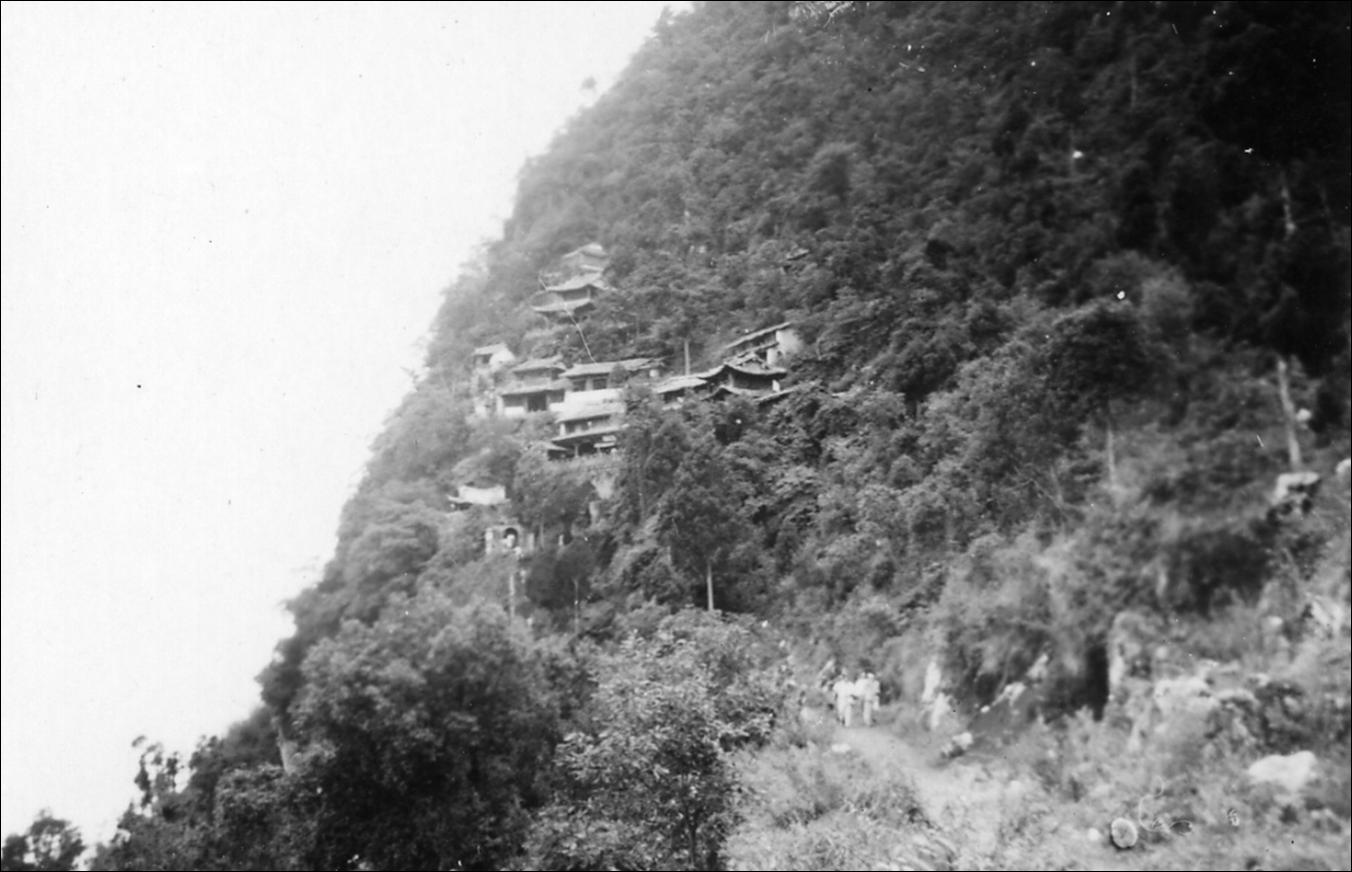
Looking up at more trailside shrines.
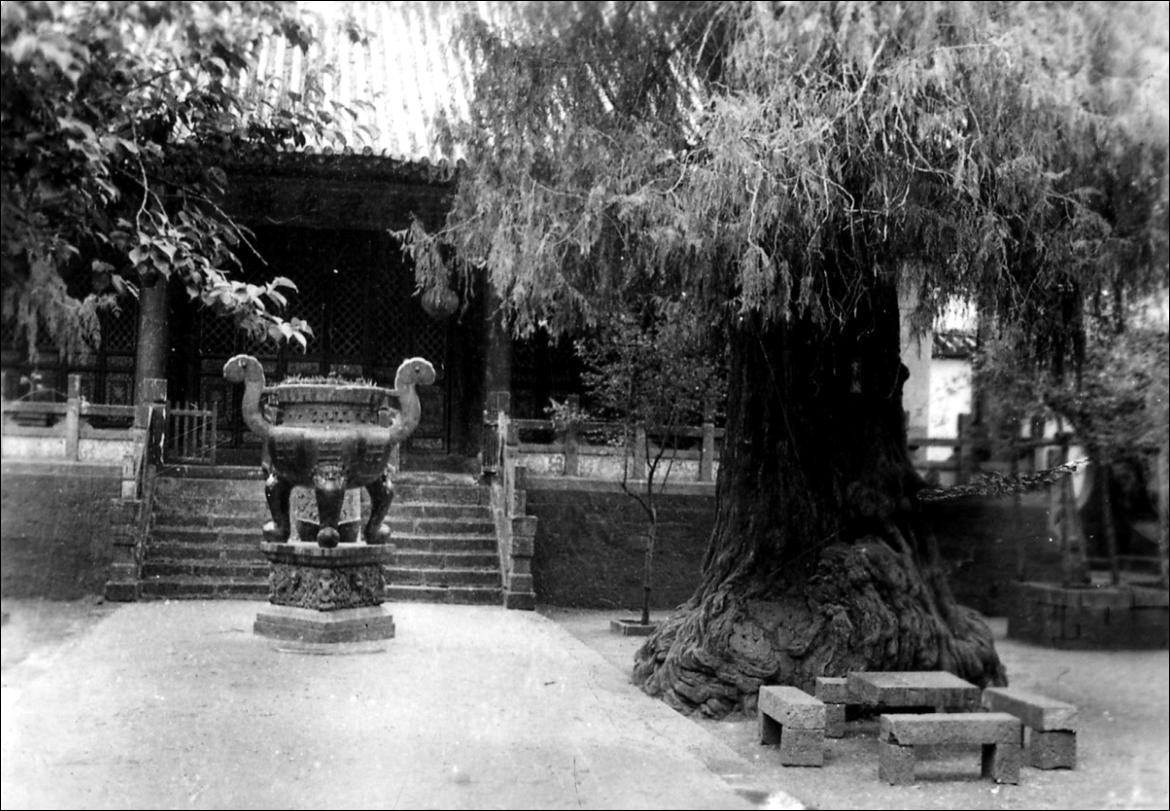
Arriving at the main shrine, you pass through the temple gate into this garden.
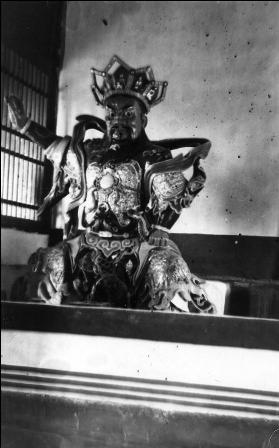 |
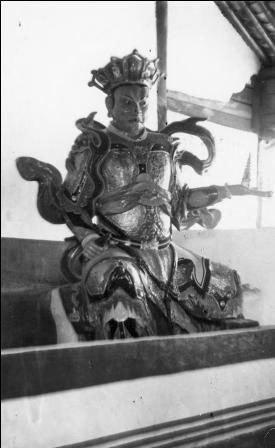 |
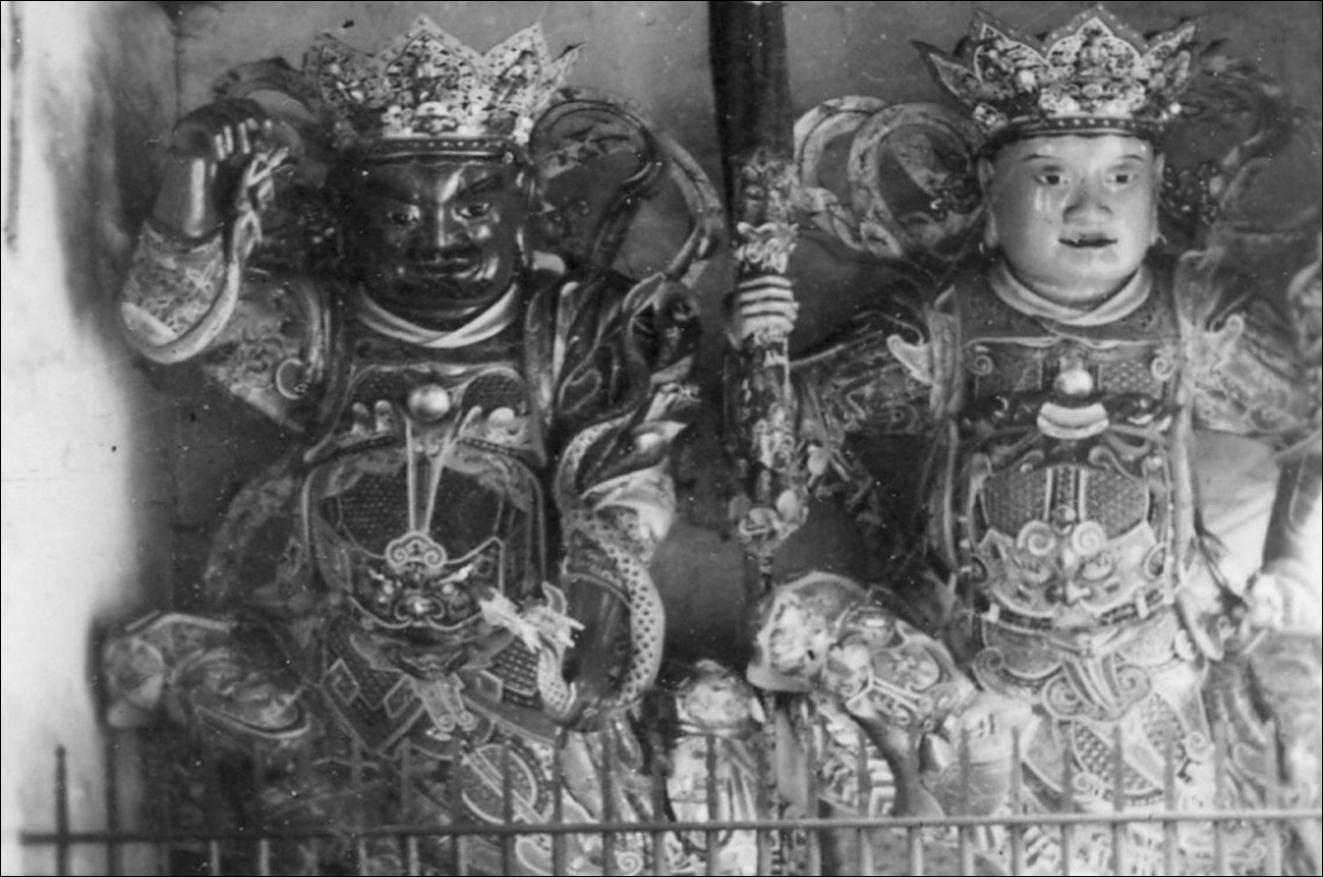
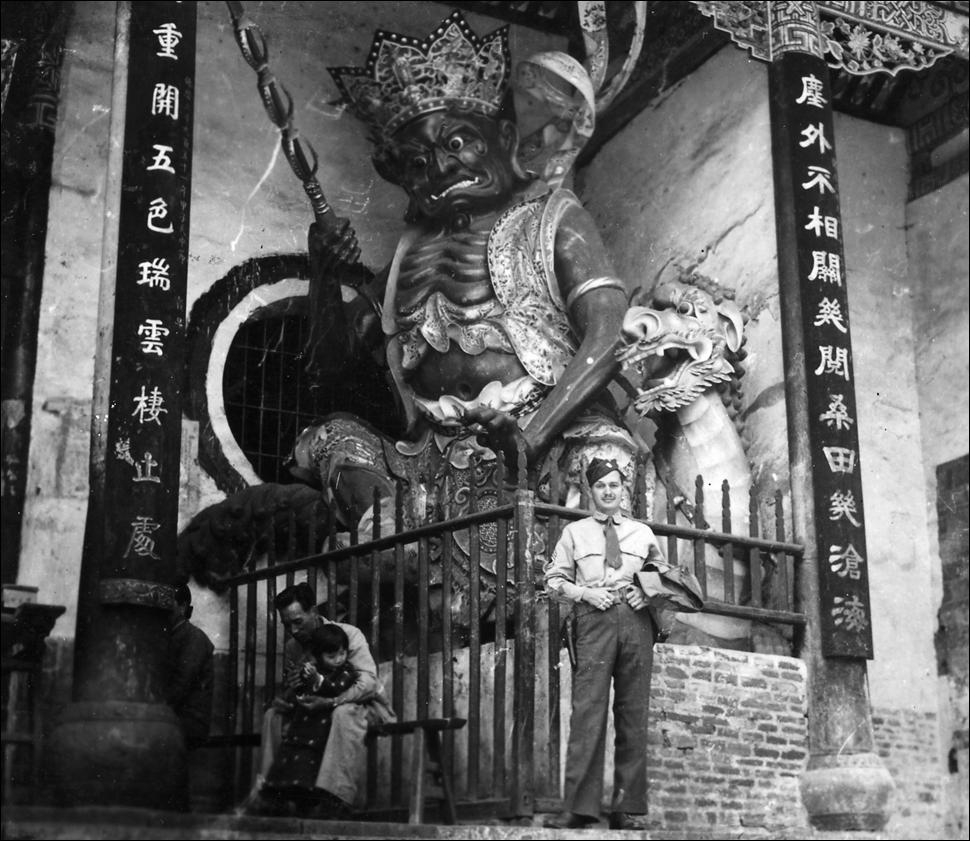
Our station chief, Master Sergeant Steve Kravchuck. I took his place, near the end of the war, when he had enough points to return to the States.
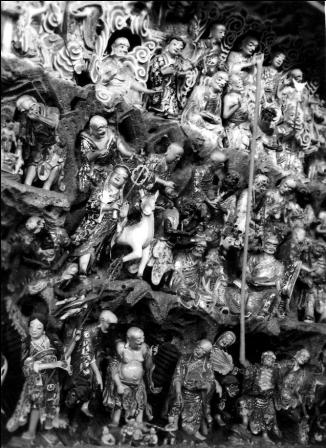 The temple of a thousand Gods. Note the one with the long arm. |
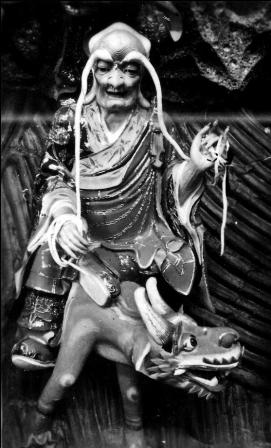 And one with long eyebrows. |
|
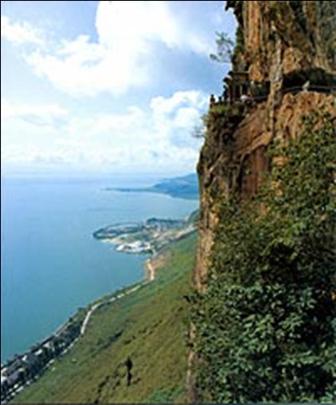 |
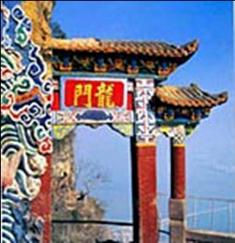 Dragon Gate (Internet photos) |
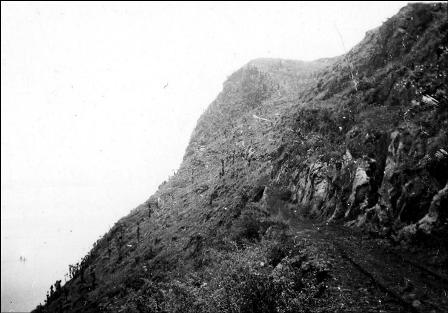 Nearing the top (above) The last shrine clings to the face of the mountain. Note the trail tunneling along the face of the cliff. High above the last shrine, a God is sculpted into solid rock. |
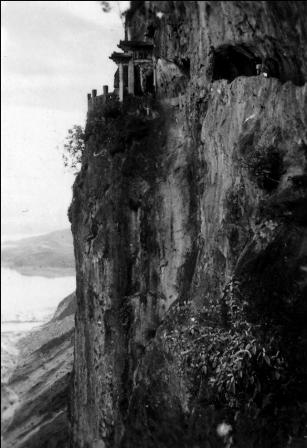 |
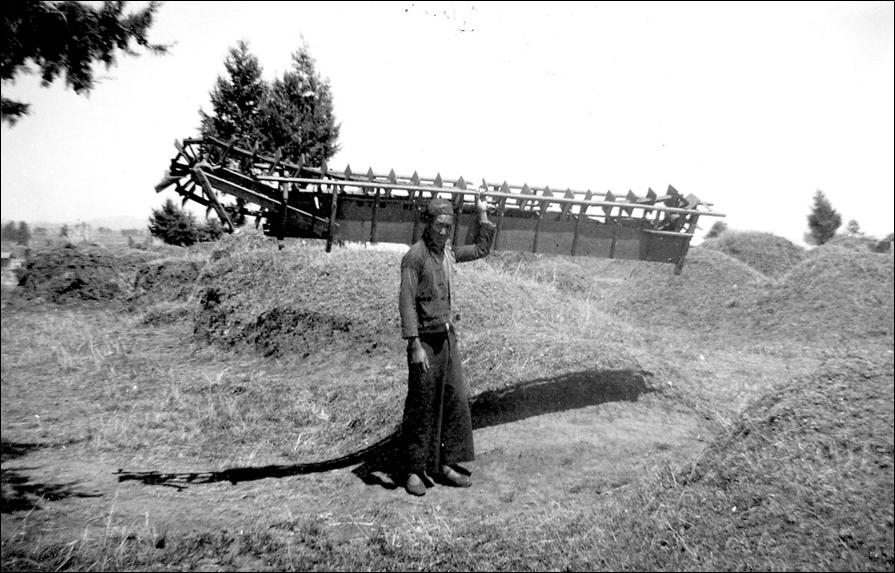
This water lifting machine, is completely made of wood. By means of a foot treadle the chain of paddles pushes water along the length of a trough to pour out at the other end.
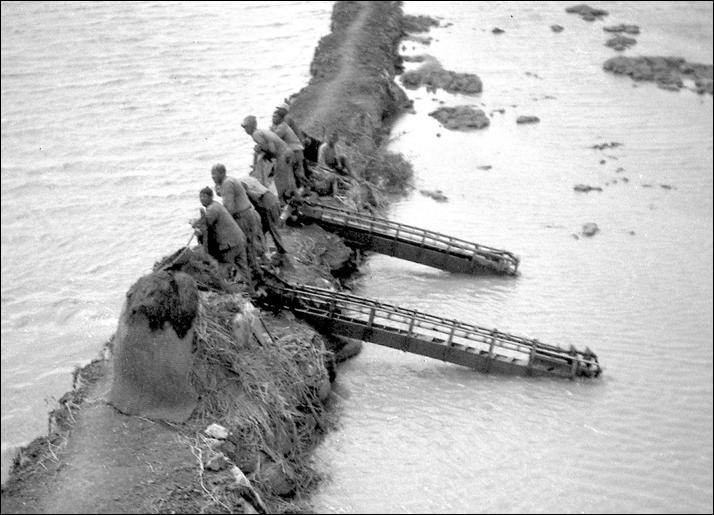
Machines at work, lifting water from a canal into a rice field.
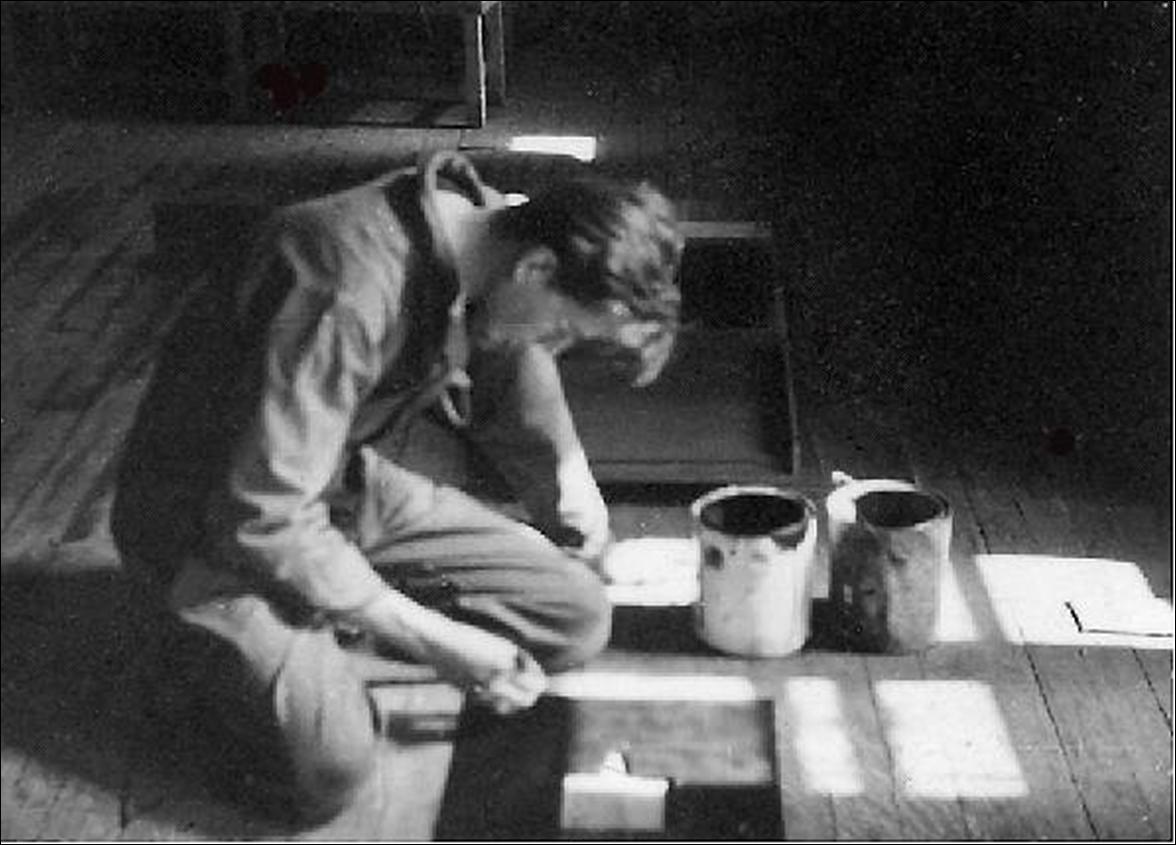
On the transmitter building floor; I wonder what I was painting?
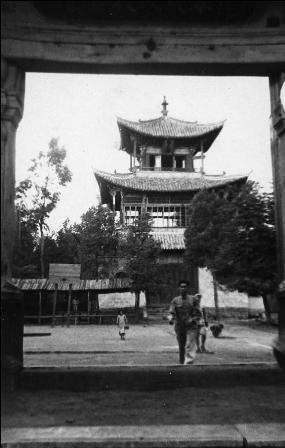 Another Pagoda |
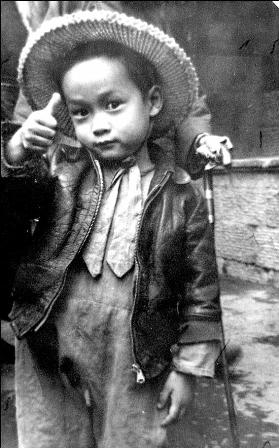 "Ding Hao" |
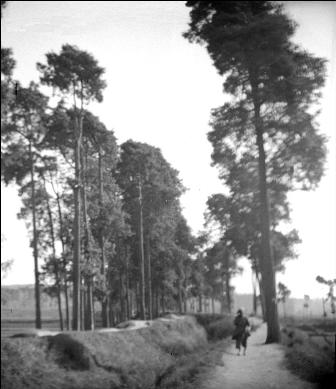 Paths along a rice field and irrigation canal. |
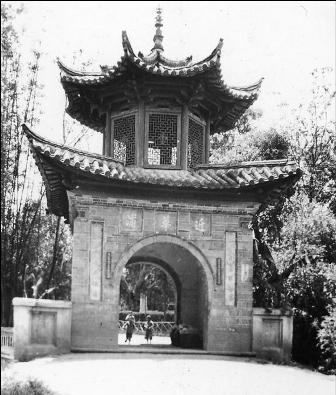 Garden Gate |
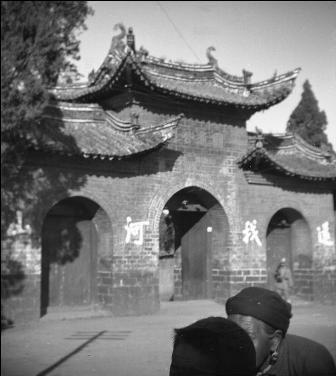 |
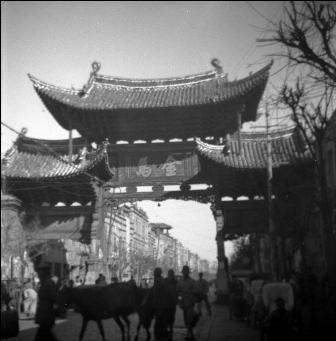 |
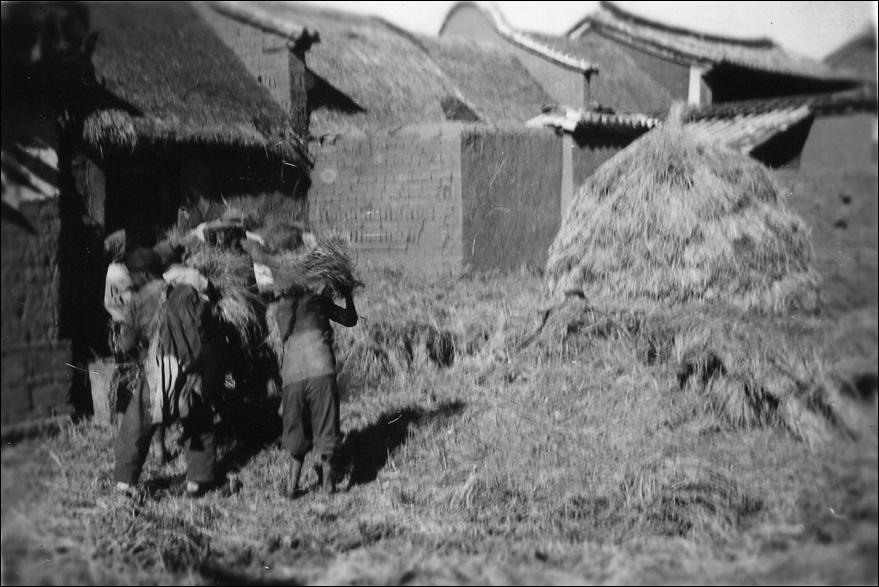
Stacking rice straw
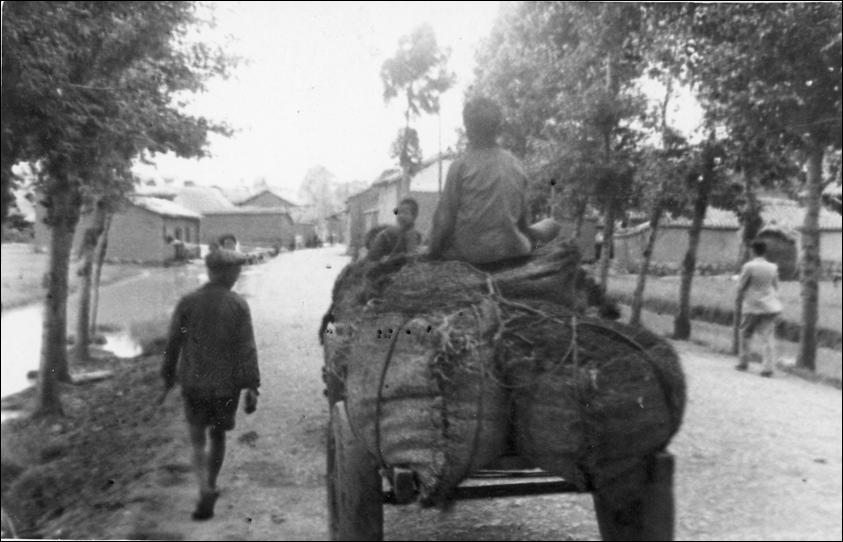
Carts made from discarded truck parts were a common sight. Note the truck wheels.
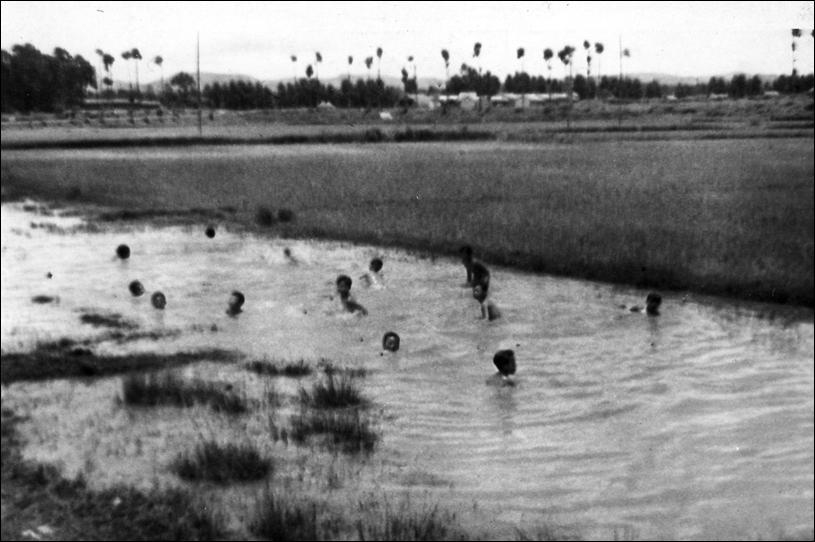
Children the world over are the same, they love the water on a hot summer day.
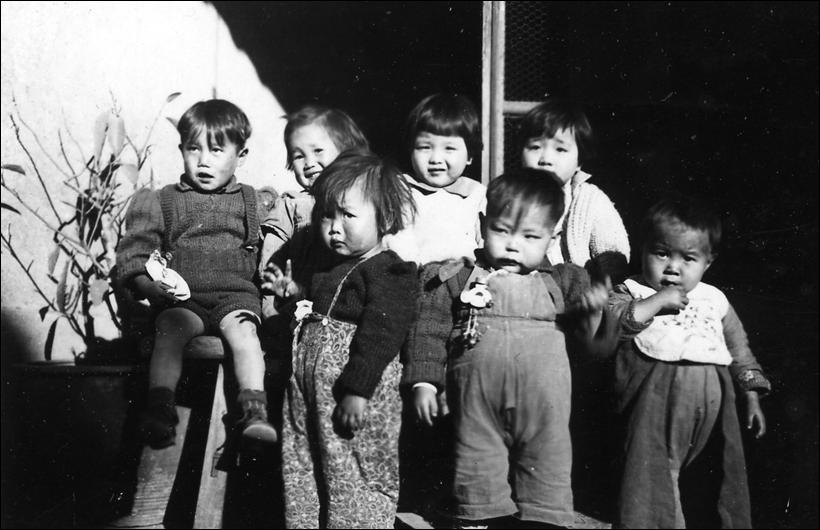
There were lots of cute kids.
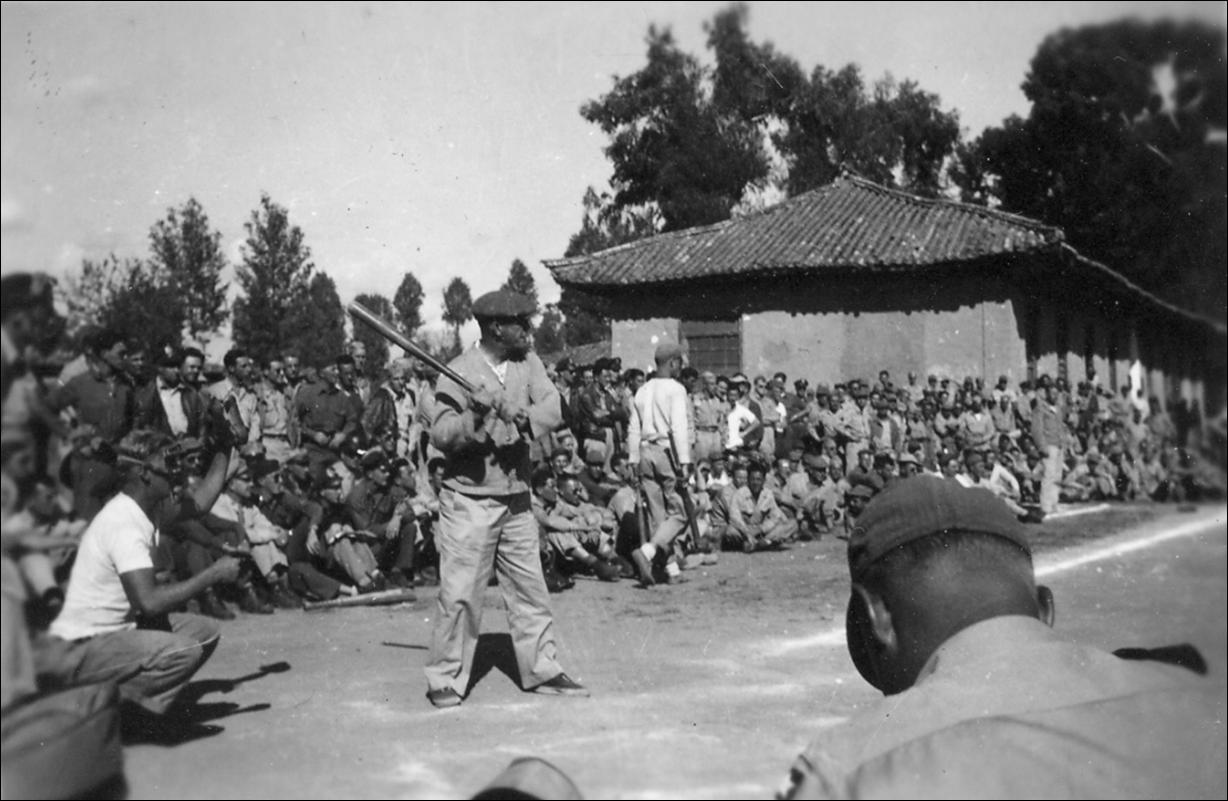
General Claire Lee Chennault at bat; he loved to play baseball.
He headed the American Volunteer Group (AVG) and was promoted to general in command of the 14th Air Force, based in Kunming.
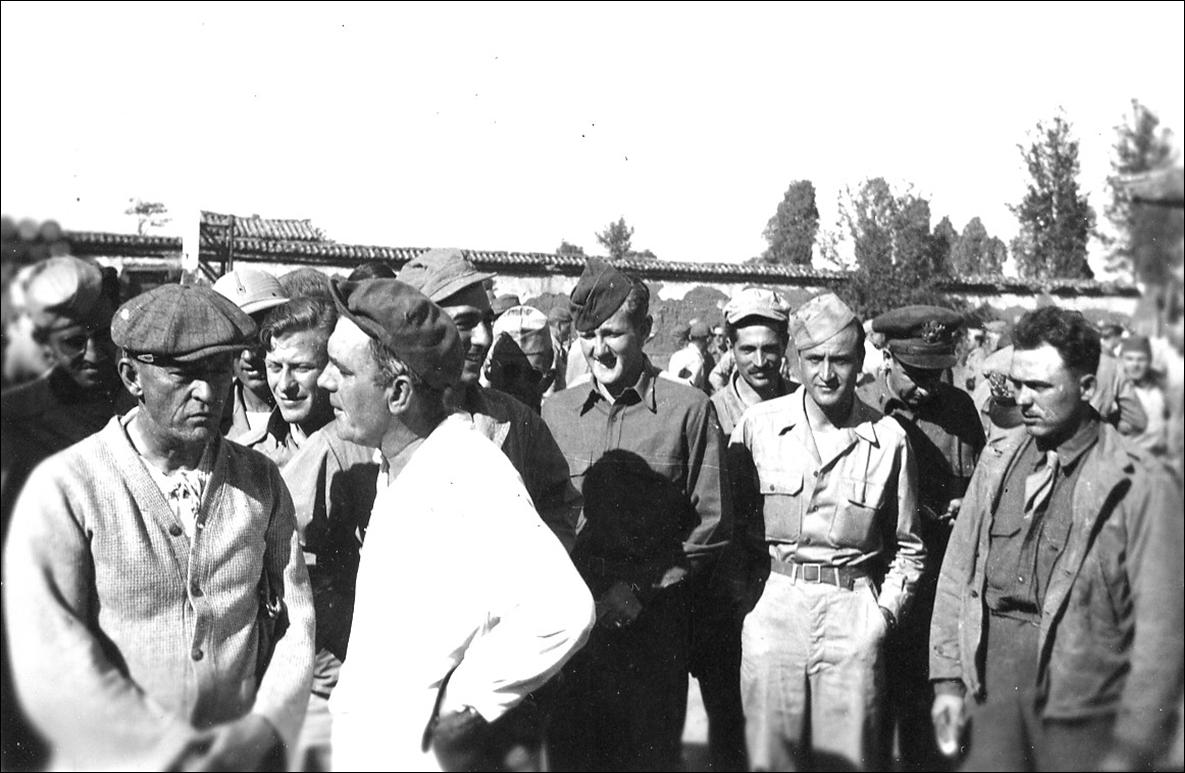
Pat O'Brien and Chennault off the ball field. Pat came to Kunming to entertain the troops.
Other visitors were Lily Pons and husband Andre Kostelanetz, Jinx Falkenberg, Ben Blue and Rita Hayworth, among others.
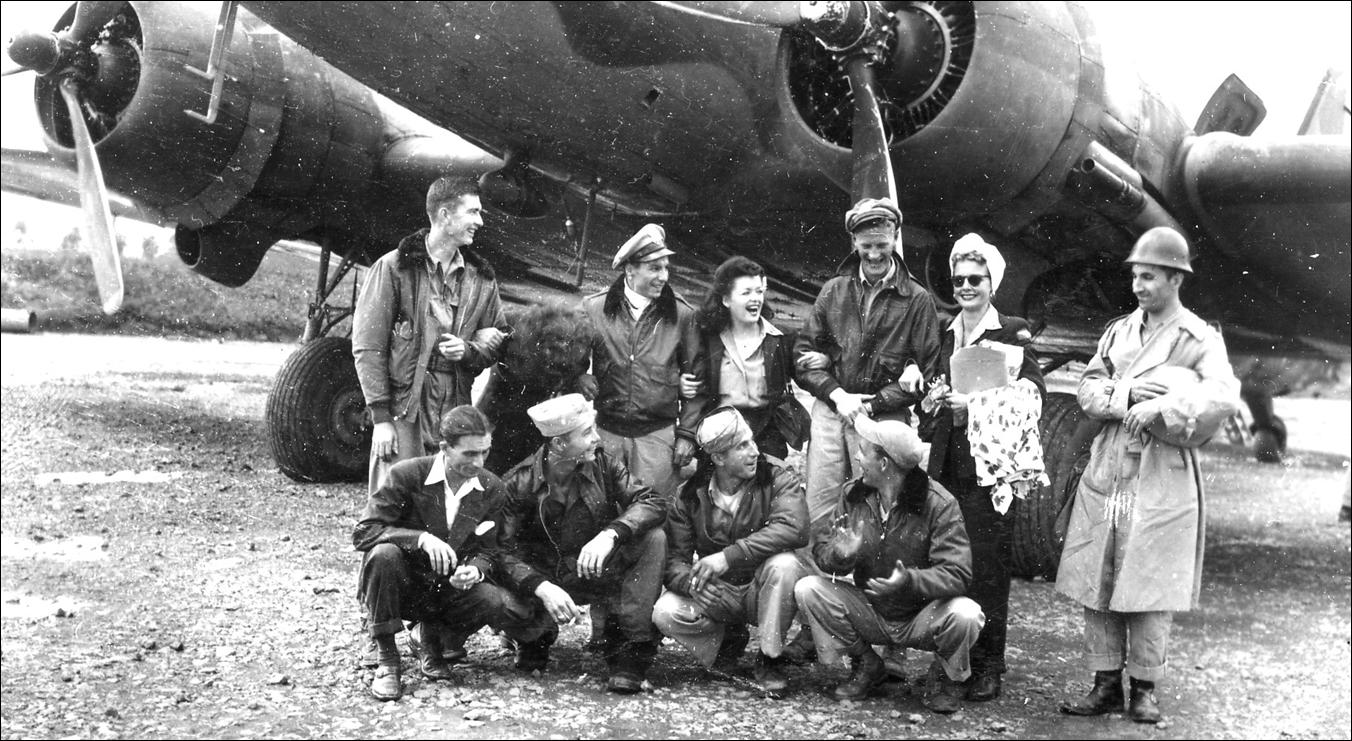
Rita Hayworth and Ben Blue arrive in Kunming. Someplace in my archives I have pictures of Lily Pons and Andr Kostelanetz entertaining.
I had Jinx Falkenberg pictures, but I gave them to her when I worked on her NBC-TV show with her husband, Tex McCrary.
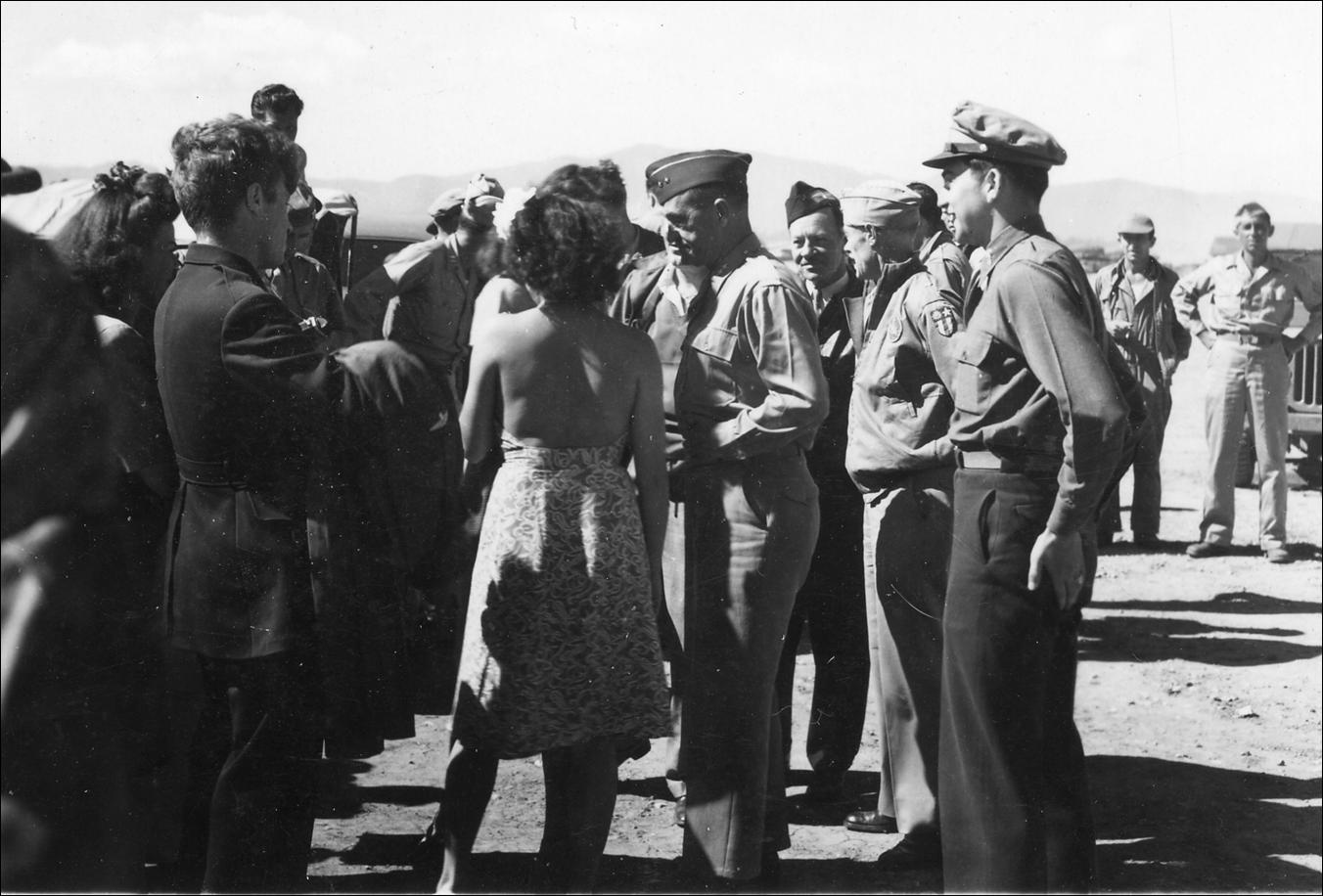
Chennault with USO entertainers
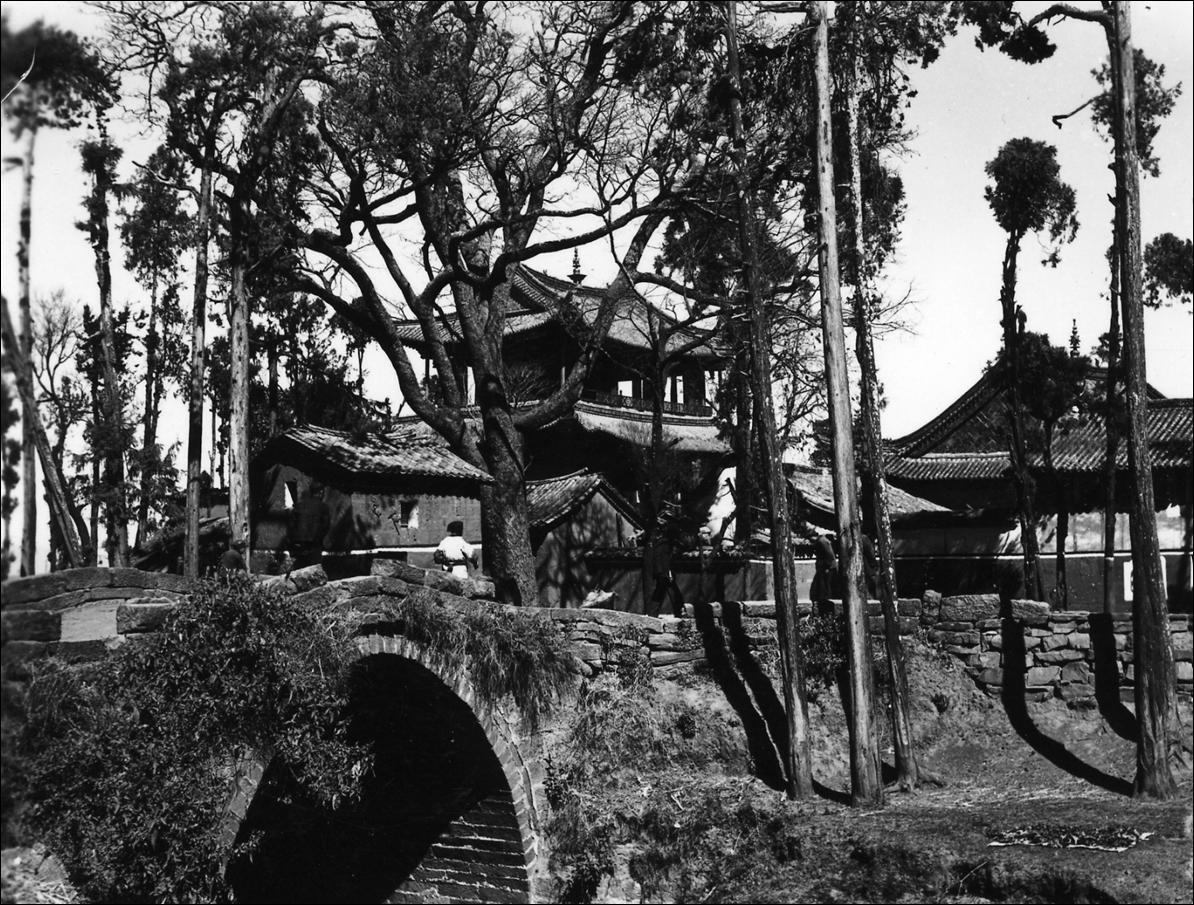
This nearby picturesque village was often a destination on a day off.
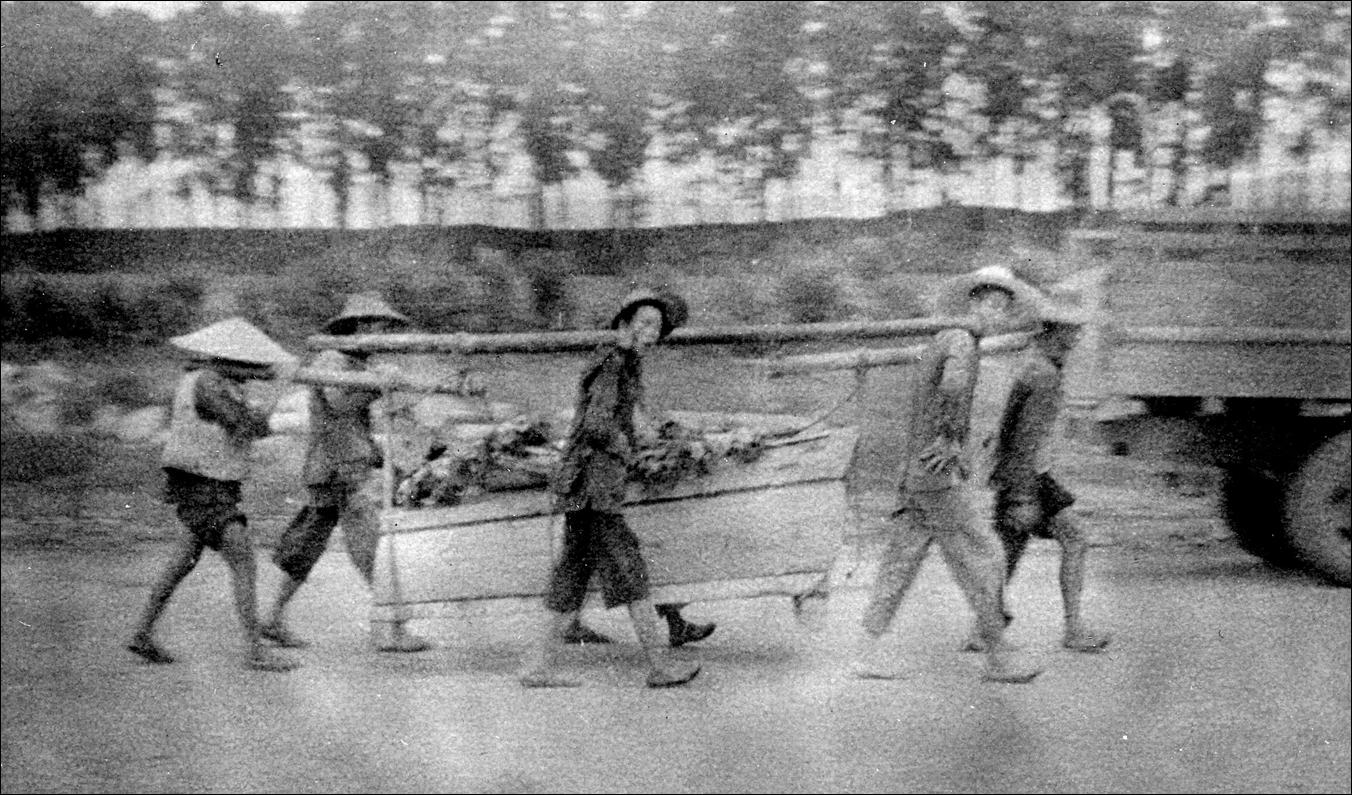
Casket carried by Yo-Yo Poles.
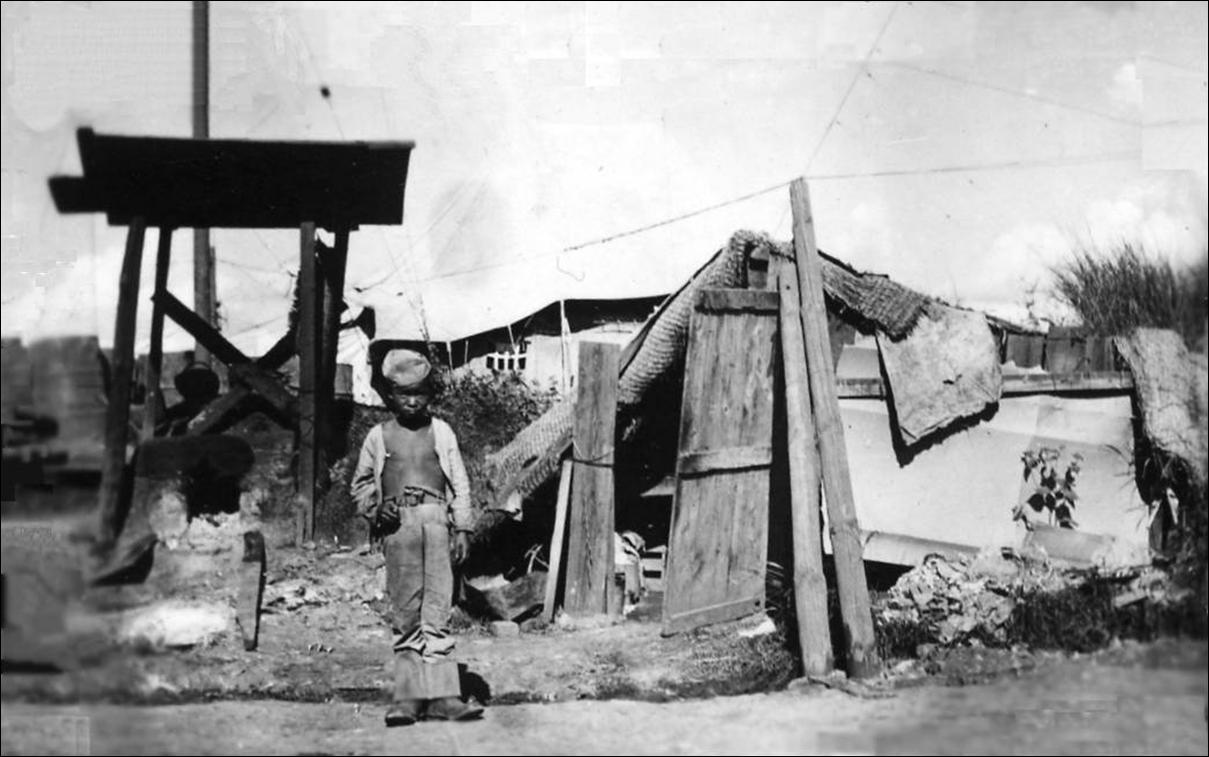
The army supplied us with a Chinese man (we named him, George) to do our menial work, basically to sweep our floor, if we could get him to even do that! He had a son, Loush, and lived in this hovel in the bank besides the road. George cooked their meals (mostly rice) under the shelter on the left.
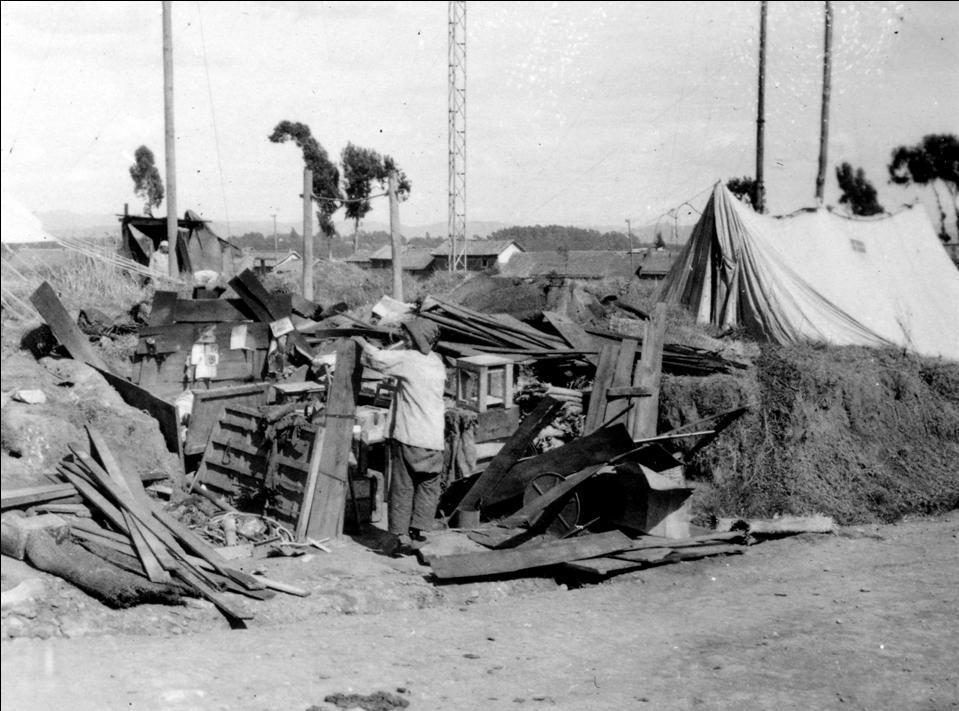
George did as little as he could to keep his job. We tried in vain to get him to fix his home. He finally got the message when we tore it down. Son Loush was adopted by the crew before I arrived and they had made boots and a GI uniform for him.Loush had a large goiter. When a group of us left for the States, October 1945, we took him to the Catholic orphanage and left him and money for an operation. He d be about 75, if he s still living.
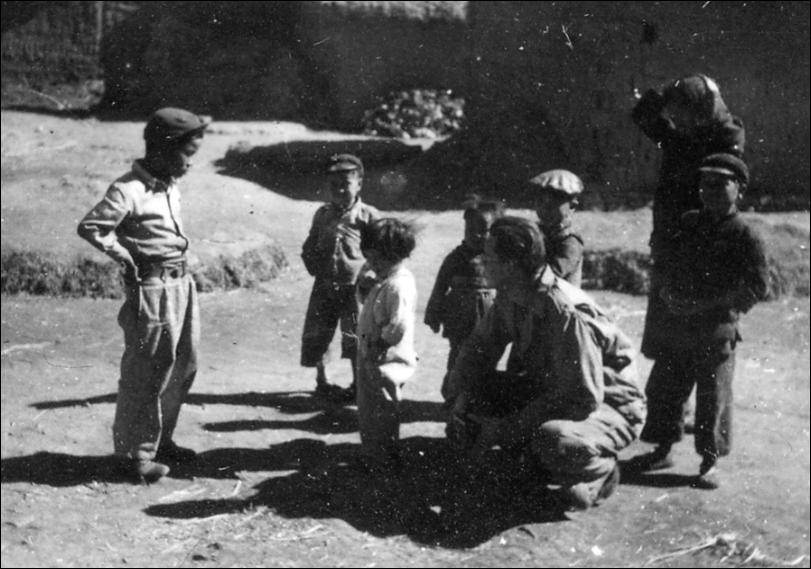
Loush with me and local village kids.
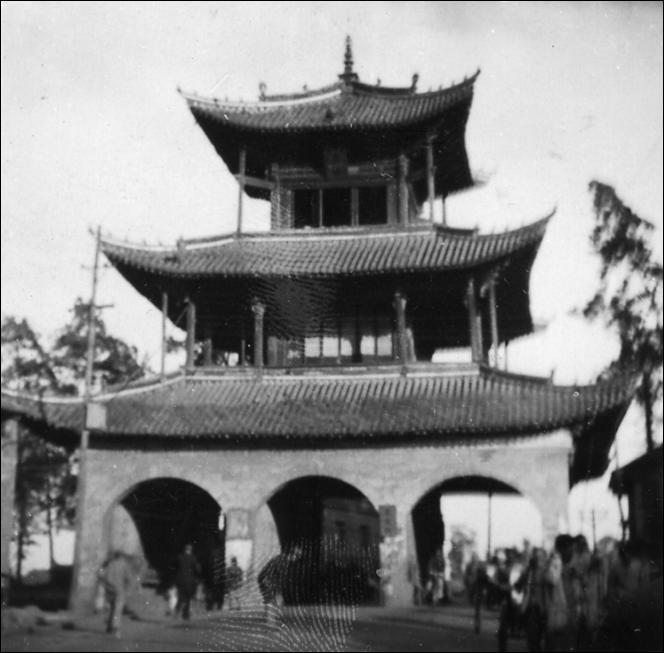
Yet, another city gate.
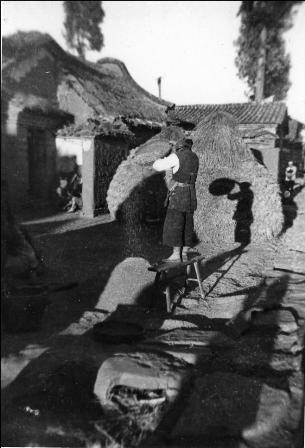 Winnowing the rice |
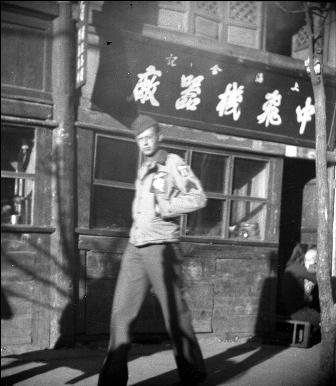 |
Walking a Kunming street
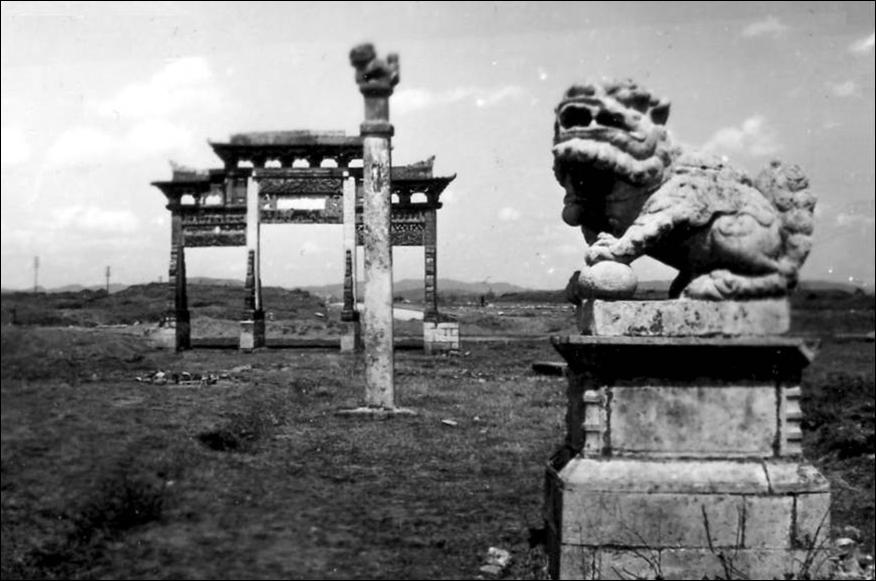
Gateway to an abandoned cemetery, adjacent to our complex.All the grave mounds had been emptied.
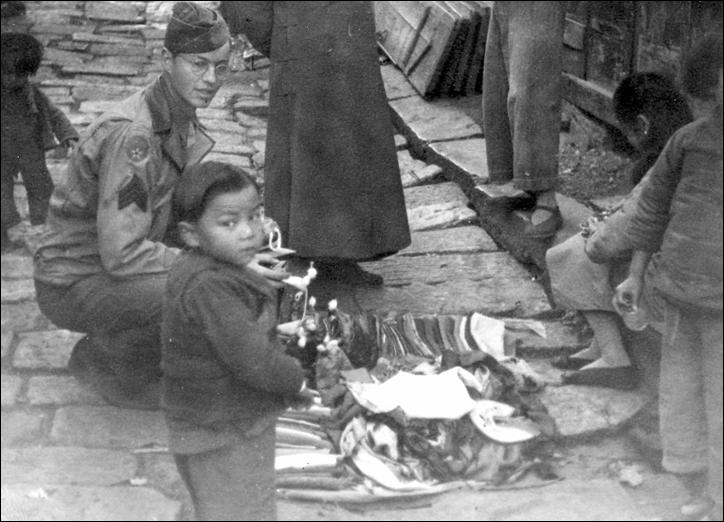
Buying Christmas gifts to send home.
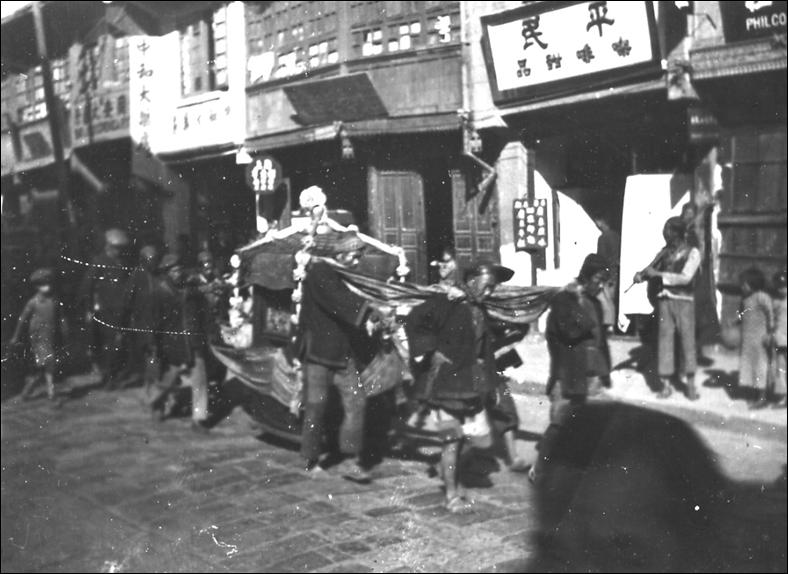
A bride passing by in her sedan chair.
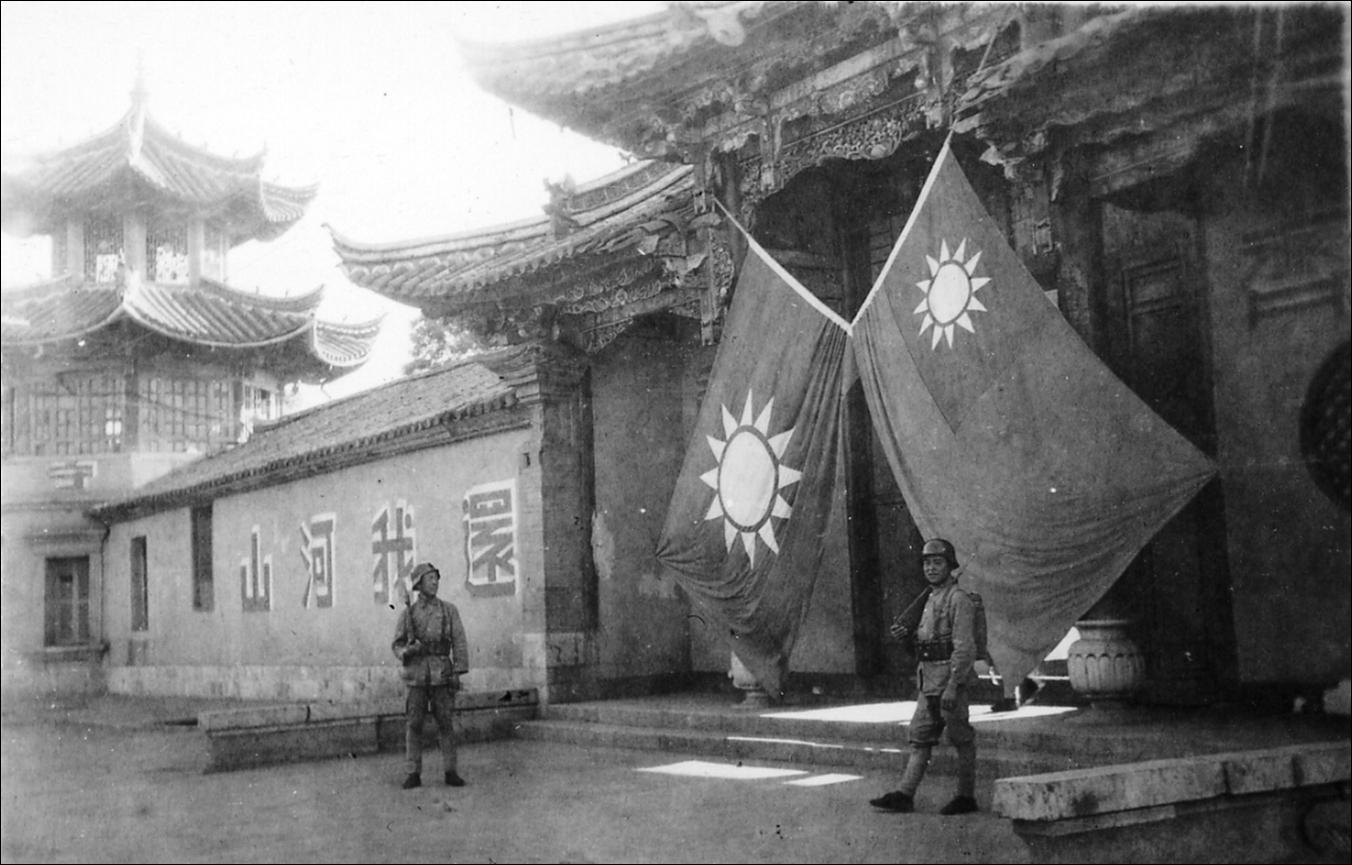
Flags at half-mast for President Roosevelt s death.
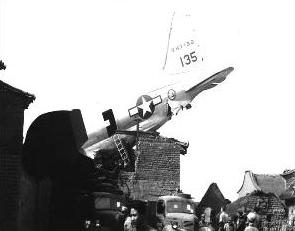 |
Normally, prevailing winds required planes to takeoff west to east. This plane, took off, east to west. Unaccustomed to having a village at the end of the runway, this C-47 pilot caught his tail wheel on a rooftop.
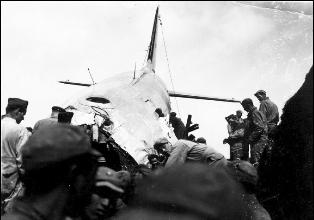 |
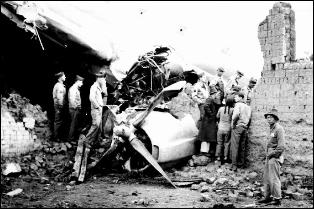 |
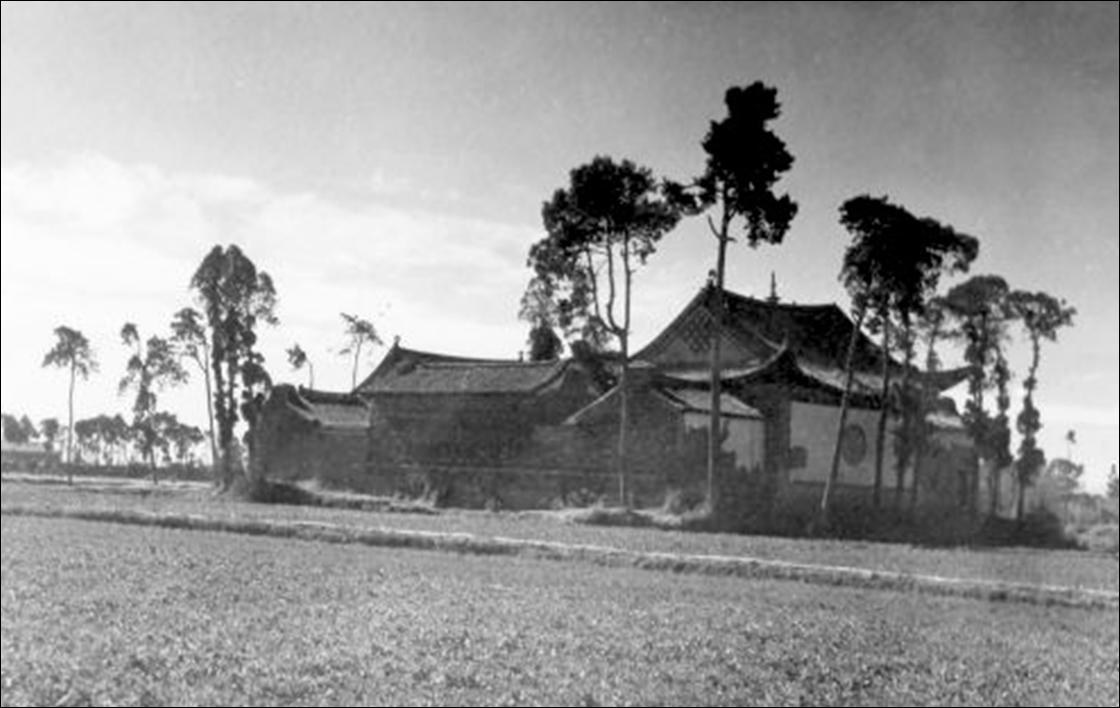
A local War-Lord and his provincial troops occupied this compound, a short distance behind our transmitter building. We were invited to dinner. I was not able to attend, but was told it was a sumptuous meal.
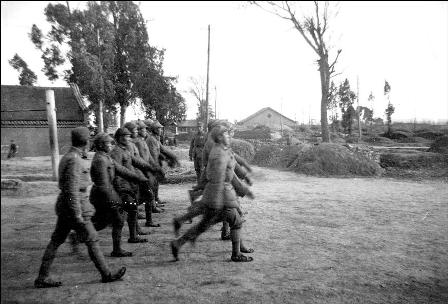 |
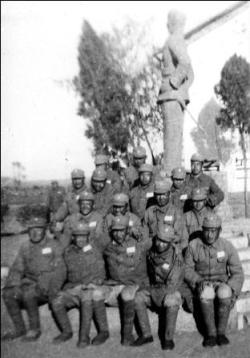 |
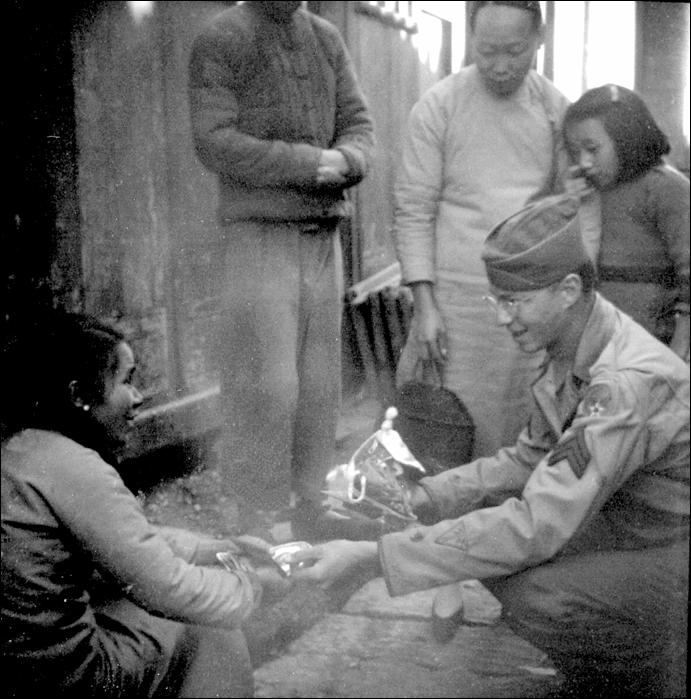
Buying from street vendors always drew curious onlookers.
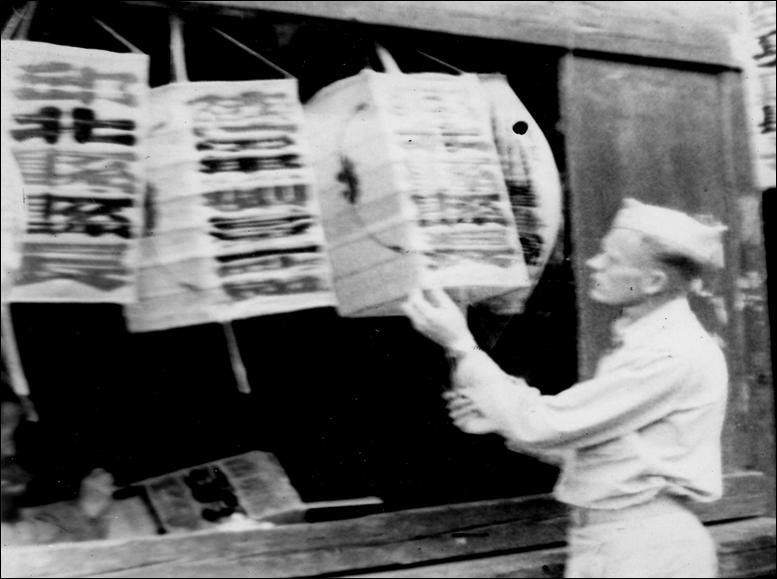
Dayton Johnson checking out Chinese Lanterns. You could buy most anything along the main street in Kunming.
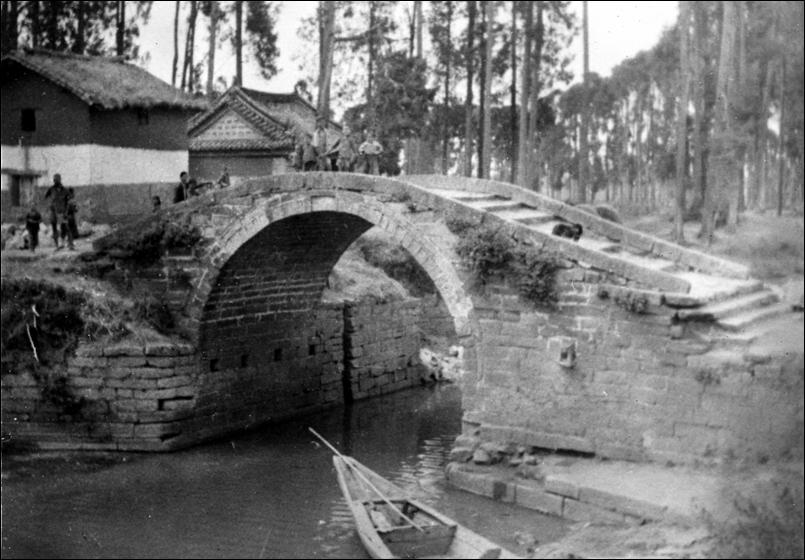
There were many irrigation canals and stone arch bridges.
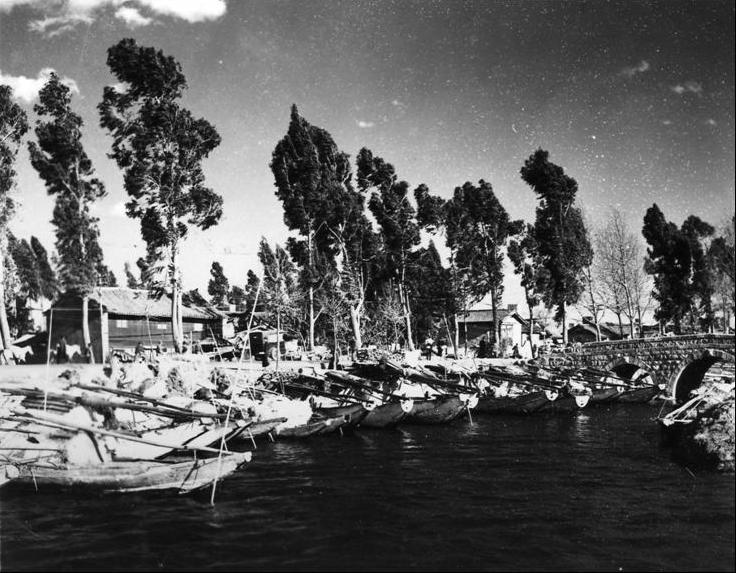
Canal to Lake Dianchi.
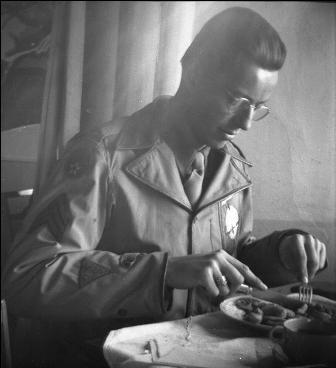 Dinner at Billie s Cafe. I think the steak was horse meat. |
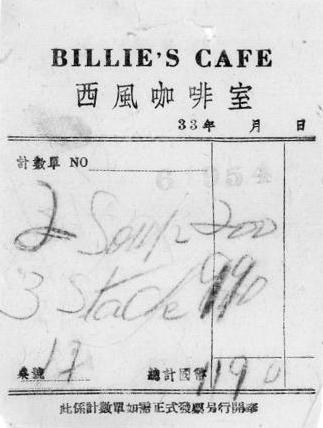 "2 soups and 3 stack." Dinner for three $11.90 Chinese - about $1.20 U.S. I didn t have soup. |
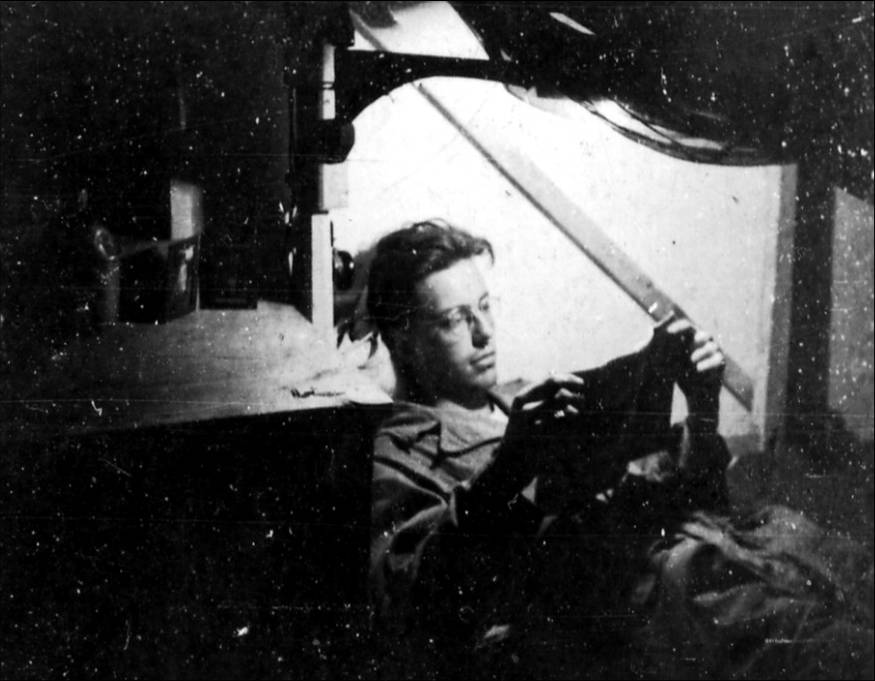
All the comforts of home. Reading by my handmade swinging bed-lamp. We had straw ticks for mattresses, a dresser and cabinet for our clothes. And netting to keep the malaria mosquitoes out. One got me and I ended up in the hospital.
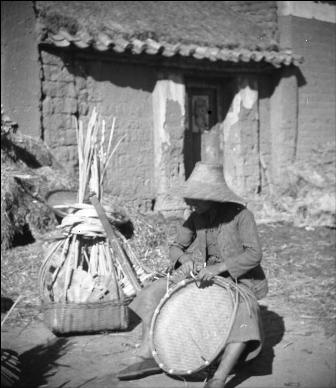 Village basket maker Village basket maker |
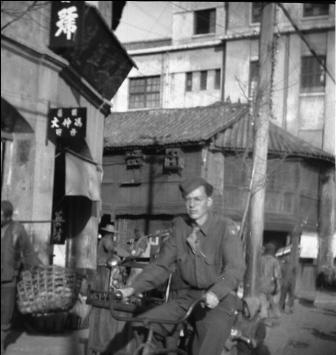 I have no memory of renting a bicycle, but here s the proof. I have no memory of renting a bicycle, but here s the proof. |
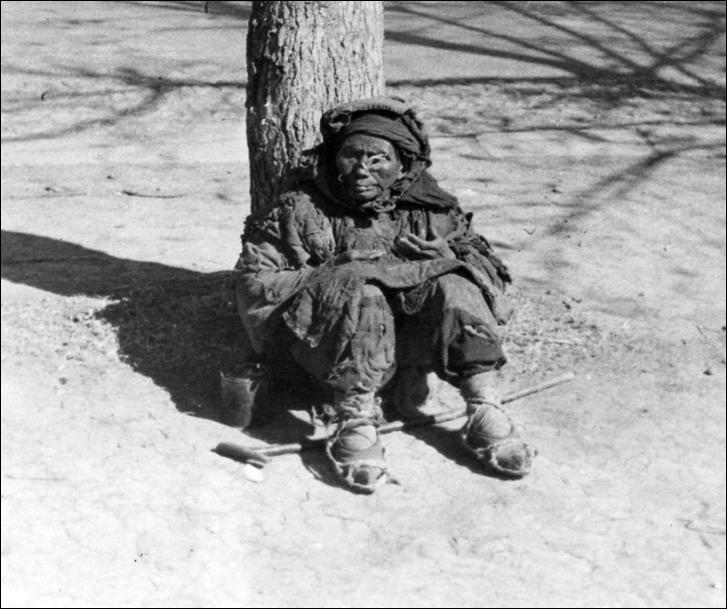
This one-eyed beggar, for a few coins, would show her empty eye socket which she kept covered with a leaf.
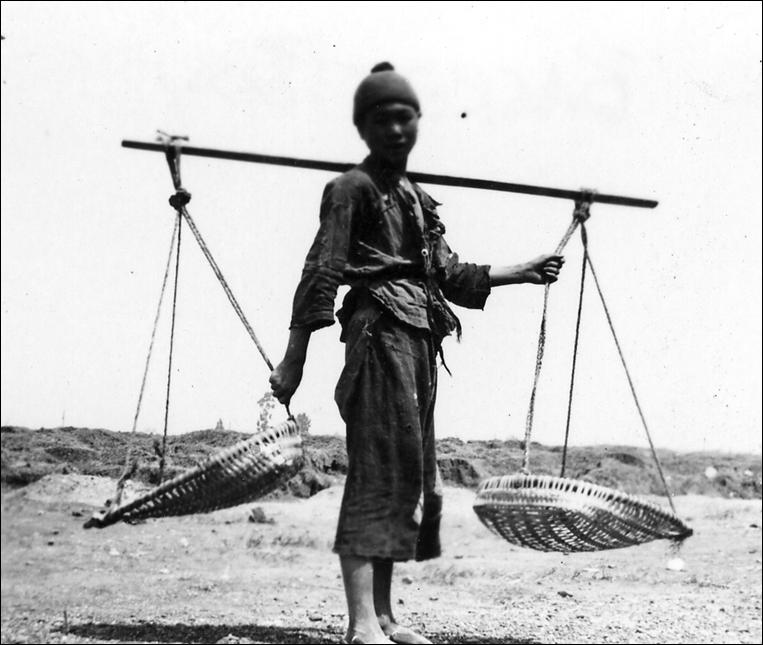
With baskets and a yo-yo pole they could carry almost anything.
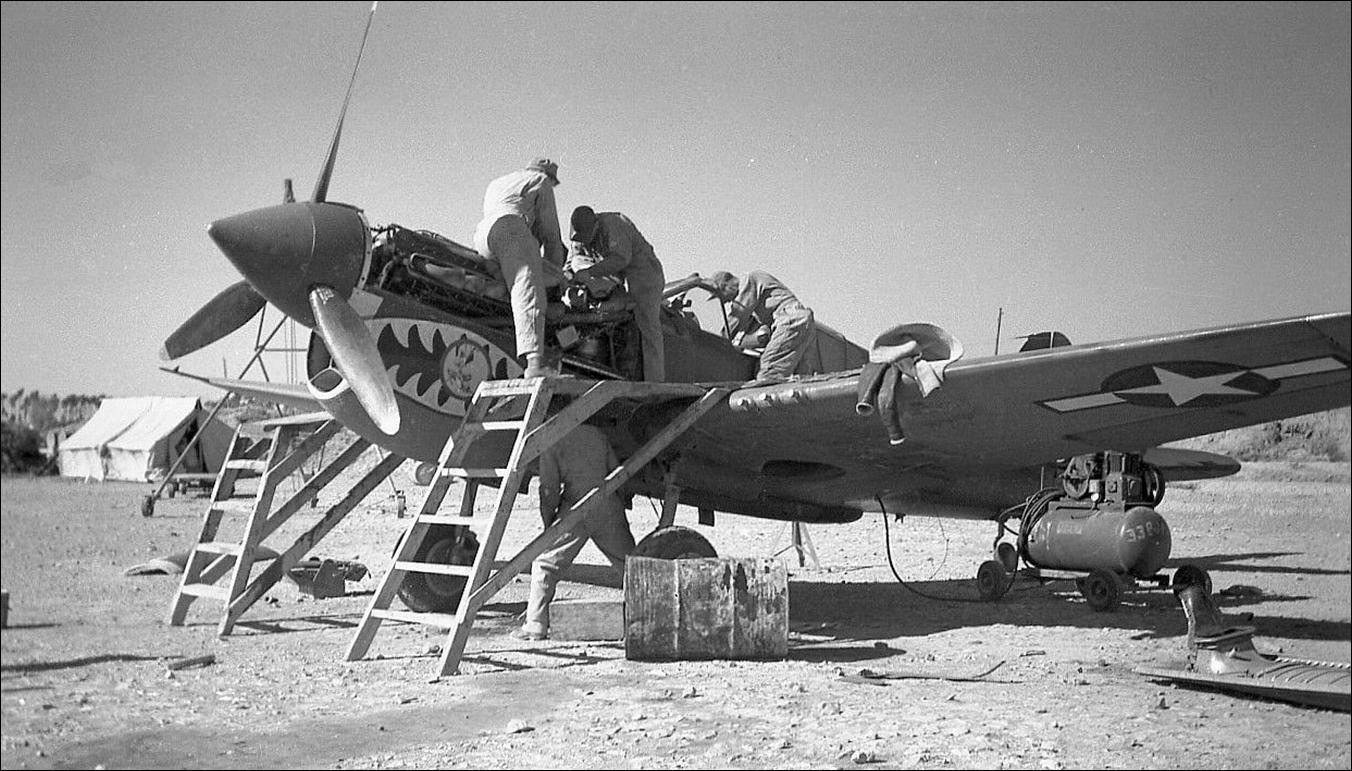
The ground crews kept them flying
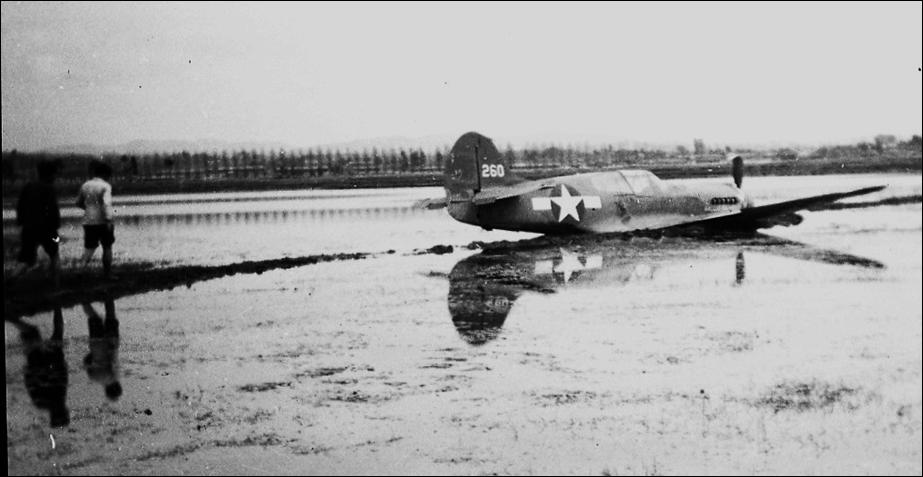
Sometimes planes didn t make the runway
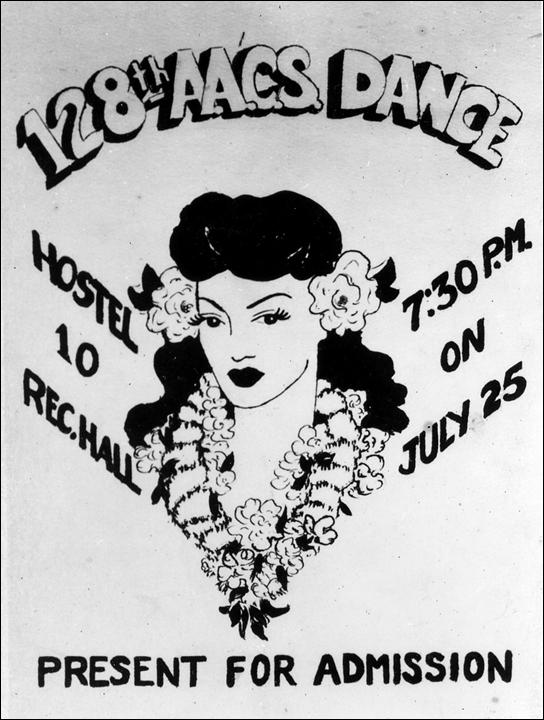
The 128th AACS was changed to the 130th.
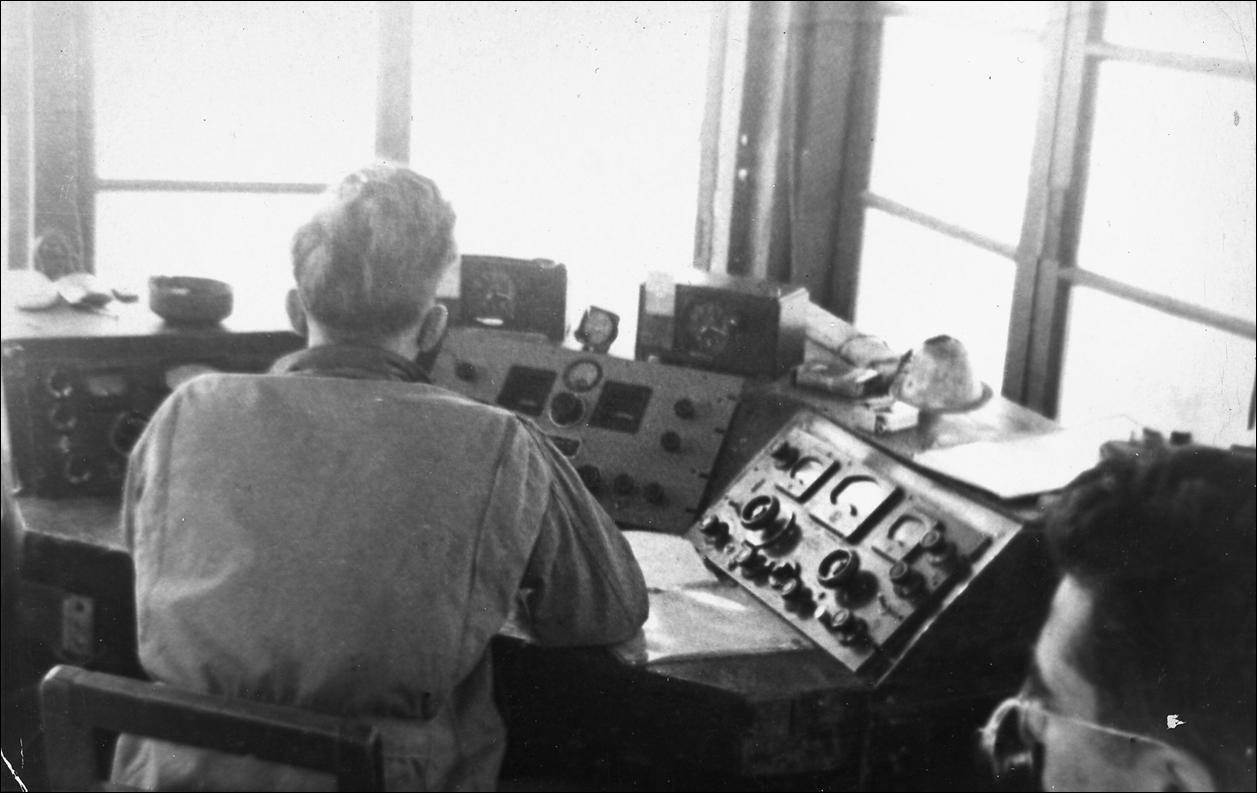
The control tower at Wujiba Airport (Kunming s Air Field)
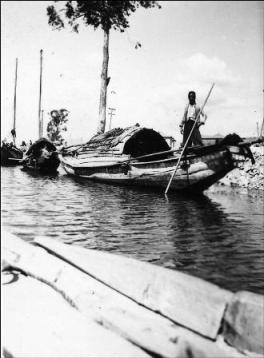 Busy canal boats Busy canal boats |
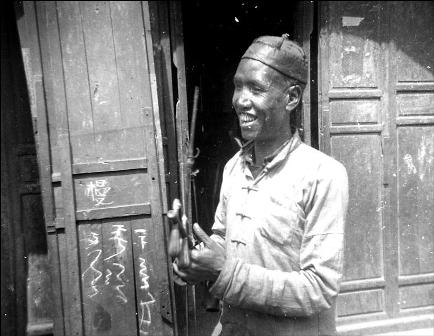 Happy street musician Happy street musician |
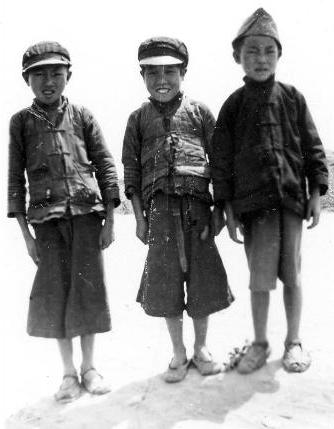 |
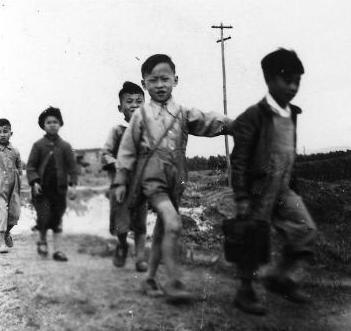 |
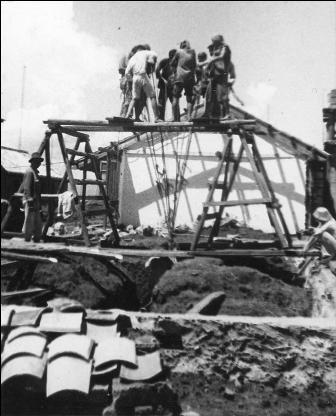 Lots of manpower - pile driving in preparation for a new barracks. |
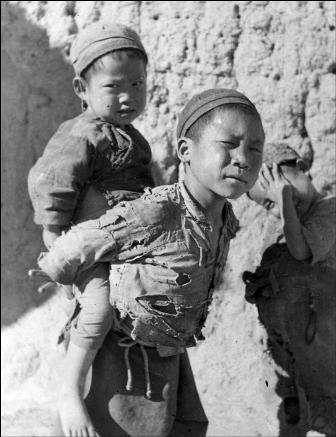 His brother s keeper you often saw children caring for their younger siblings. |
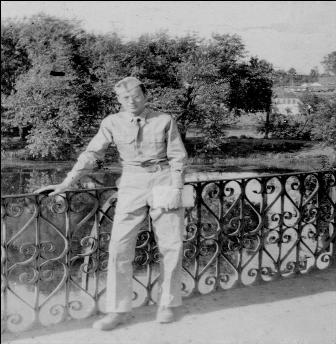 In Kunming City Park on the way back to camp from an orphanage visit. We took candy to the children. The package is a gift I purchased at the Nun s gift shop. |
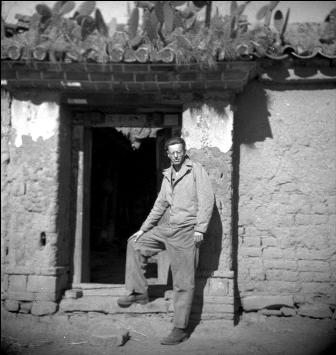 In a village doorway |
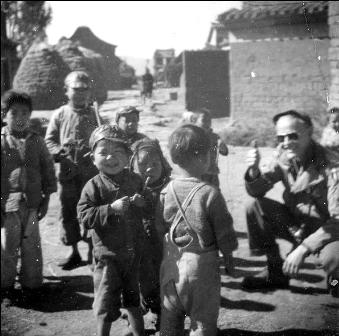 Dayton Johnson, with the children. They were always fun to be with. Dayton Johnson, with the children. They were always fun to be with. |
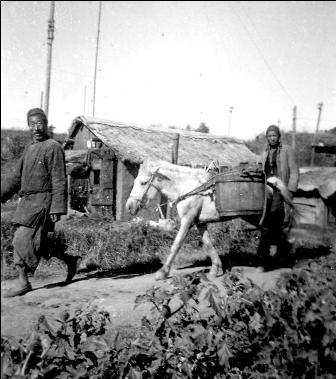 We were on a busy road with all kinds of commercial traffic We were on a busy road with all kinds of commercial traffic |
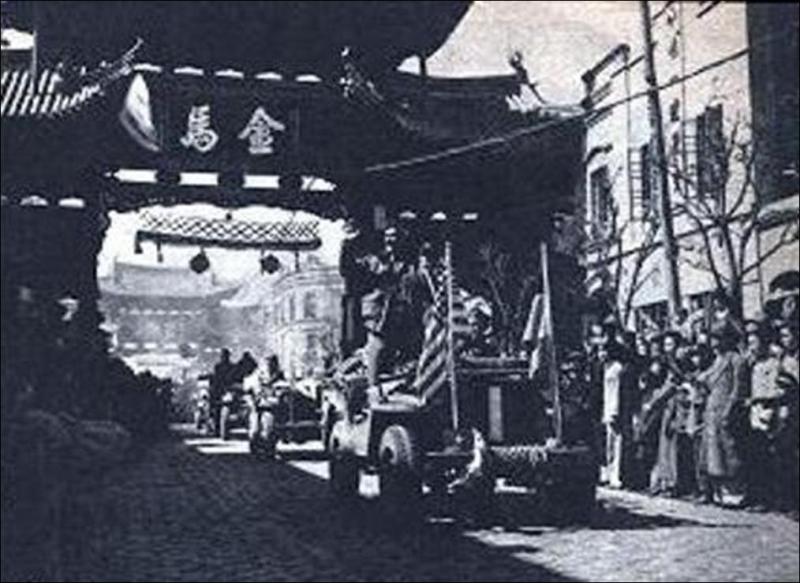
High school classmate, and future brother-in-law, Paul Rittenhouse, was with me in Kunming for the official opening of the Stillwell Road.
General Pick led the convoy into the city. Paul served with the Air Transport Command and had the occasional opportunity to stop in Kunming.
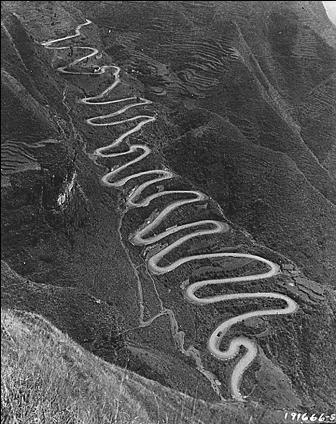 What an engineering feat! |
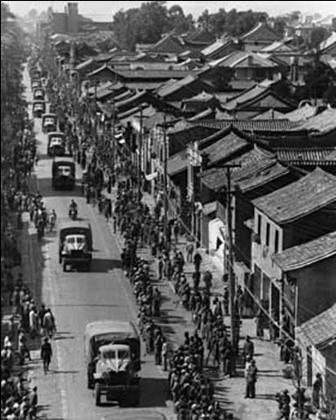 The first convoy enters Kunming |
| ● September 2, 1945 VJ Day |
| ● By October I had enough points to return state-side. |
| ● I flew to Calcutta, then Karachi and had Thanksgiving dinner there. |
| ● We sweated out getting a ship to take us home by Christmas? |
| ● We sailed on Liberty Ship, General J. H. McRae, November 23rd. |
| ● Through the Red Sea, Suez Canal into a very stormy Mediterranean. |
| ● Gibraltar was calm, but a storm of the century awaited in the Atlantic. |
| ● At the storm s peak, at full steam, we only made 67 miles in 24 hrs! |
| ● Any less headway and we would have gone down. |
| ● After 32 days at sea we docked on Christmas Eve in New York City. |
| ● We were taken to Camp Kilmer to be mustered out. |
| ● Anyone who could get home and back in 24 hours got a pass. |
| ● I was home for Christmas and discharged on December 28, 1945. |
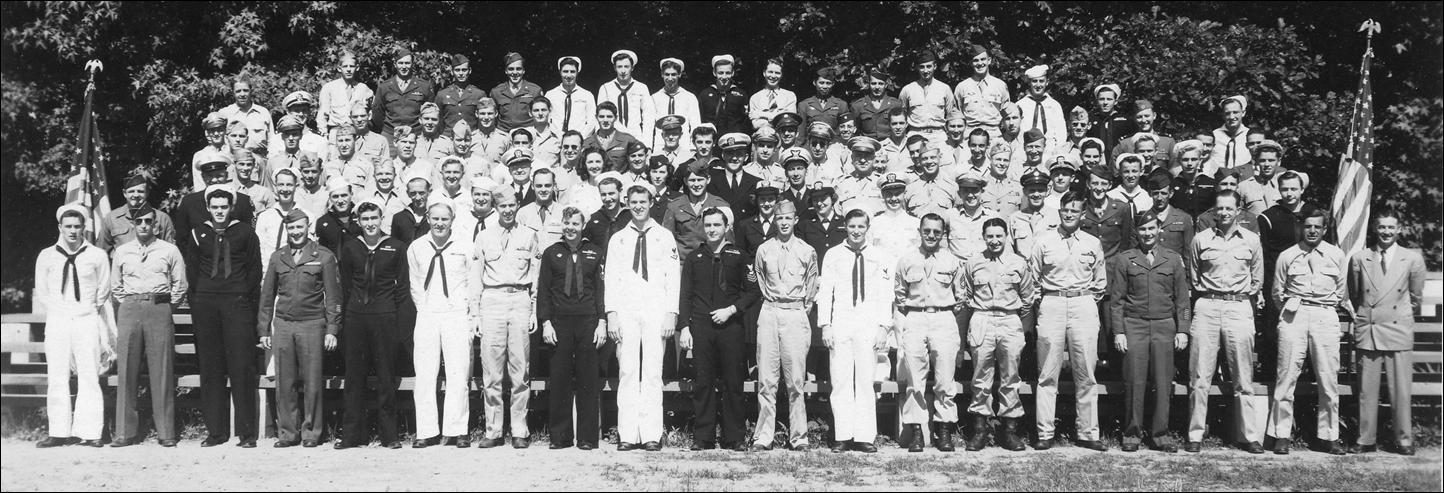
Oradell (New Jersey) World War II Veterans. I'm not in the picture.
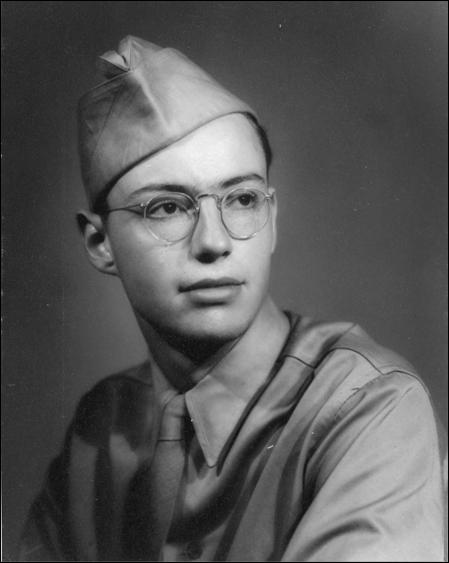
Portrait taken at Madison, Wisconsin to send home.
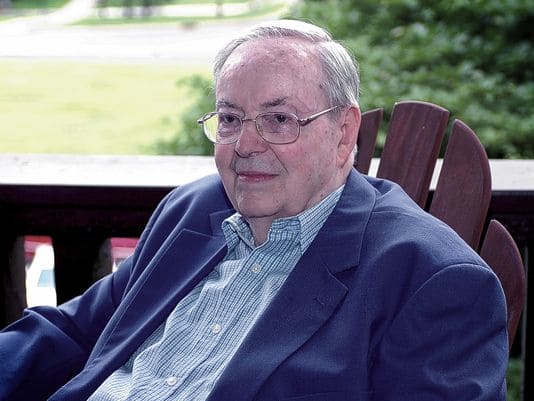
FRANK R. VIERLING
September 10, 1923 - January 26, 2017
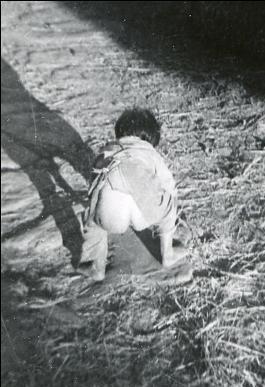 Typical Chinese split pants - how convenient, and no diapers needed! |

Original presentation by Frank R. Vierling
Adapted for the Internet by Carl W. Weidenburner
Copyright © 2009
TOP OF PAGE
E-MAIL YOUR COMMENTS
MORE CBI THEATER
